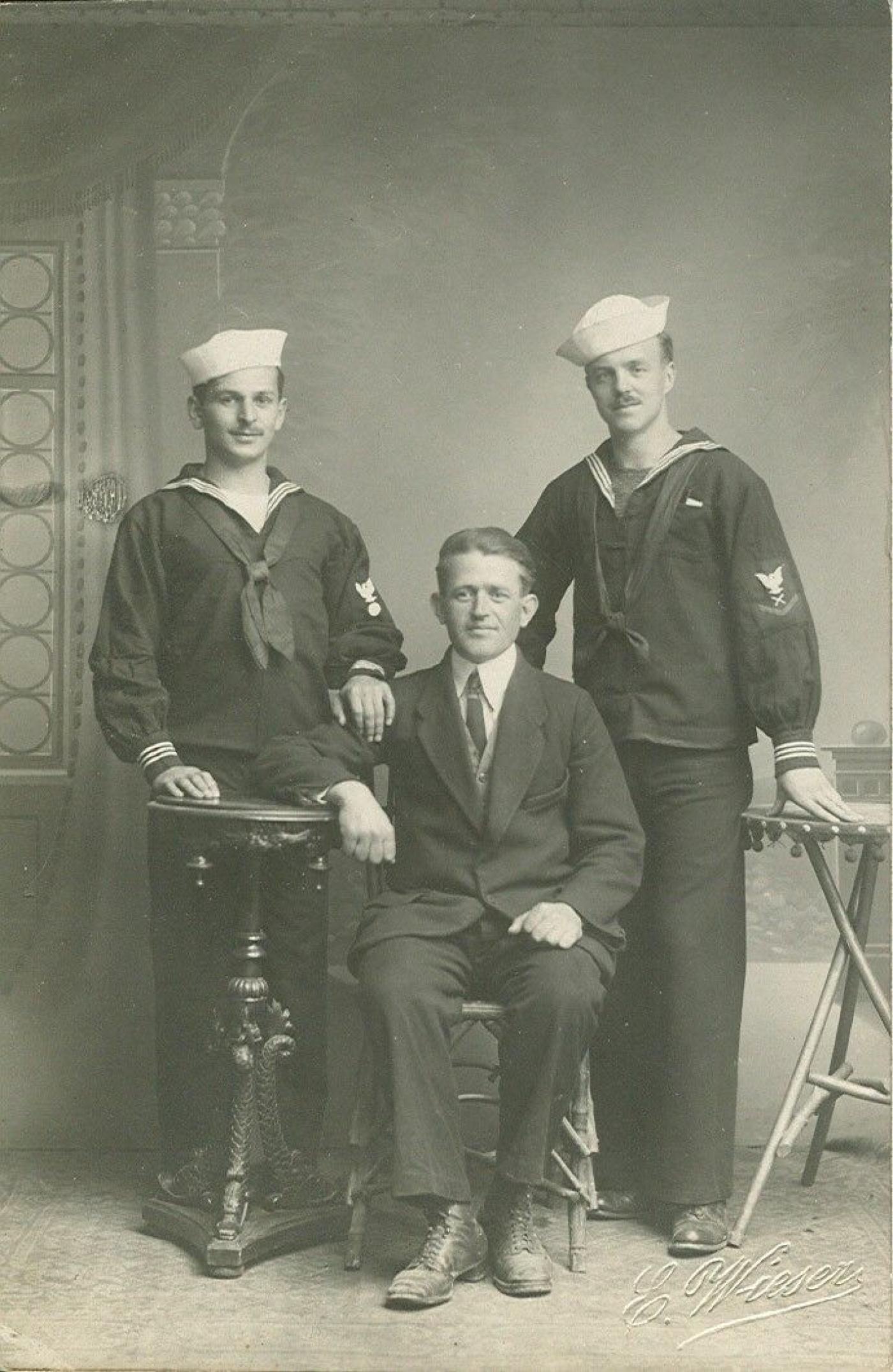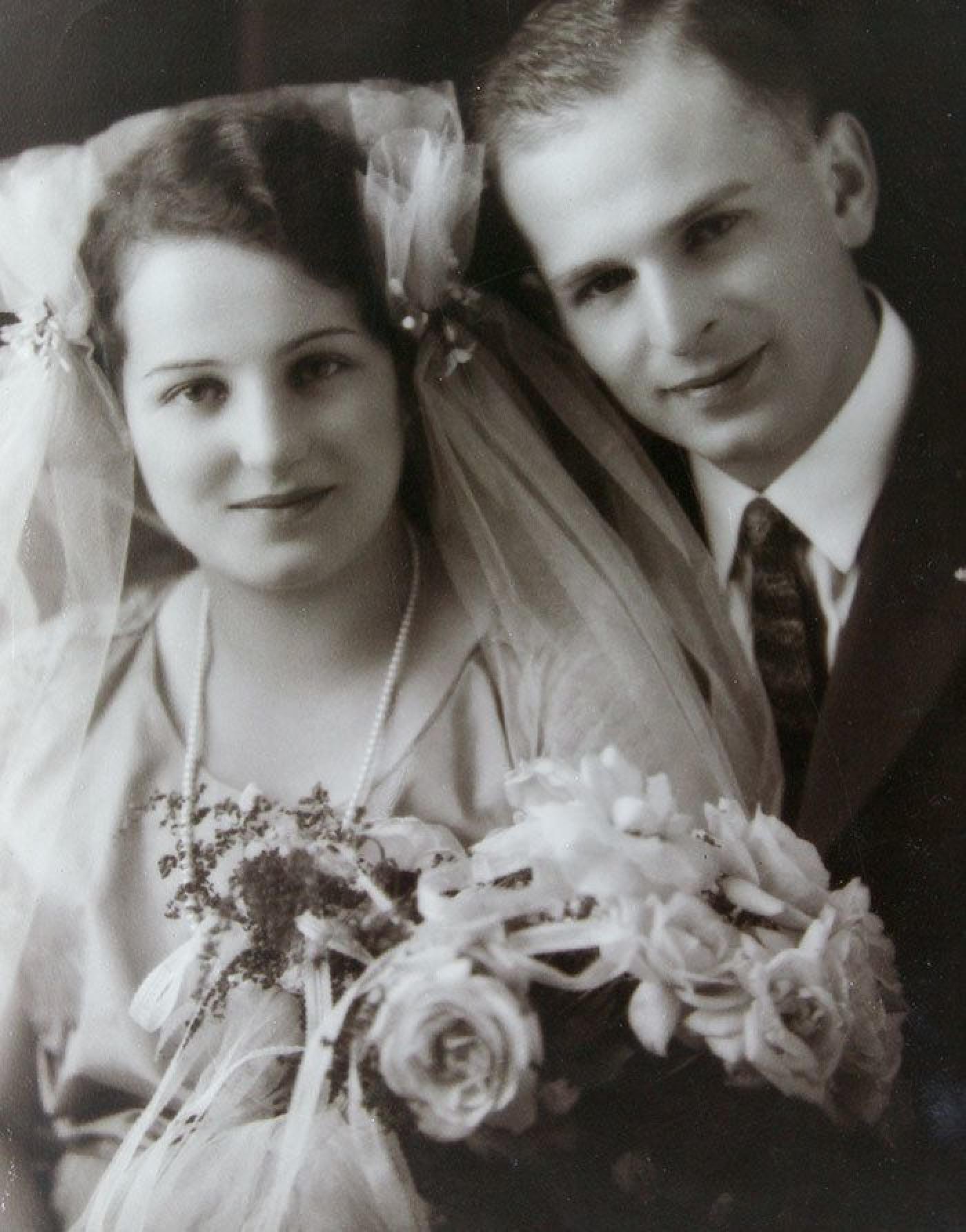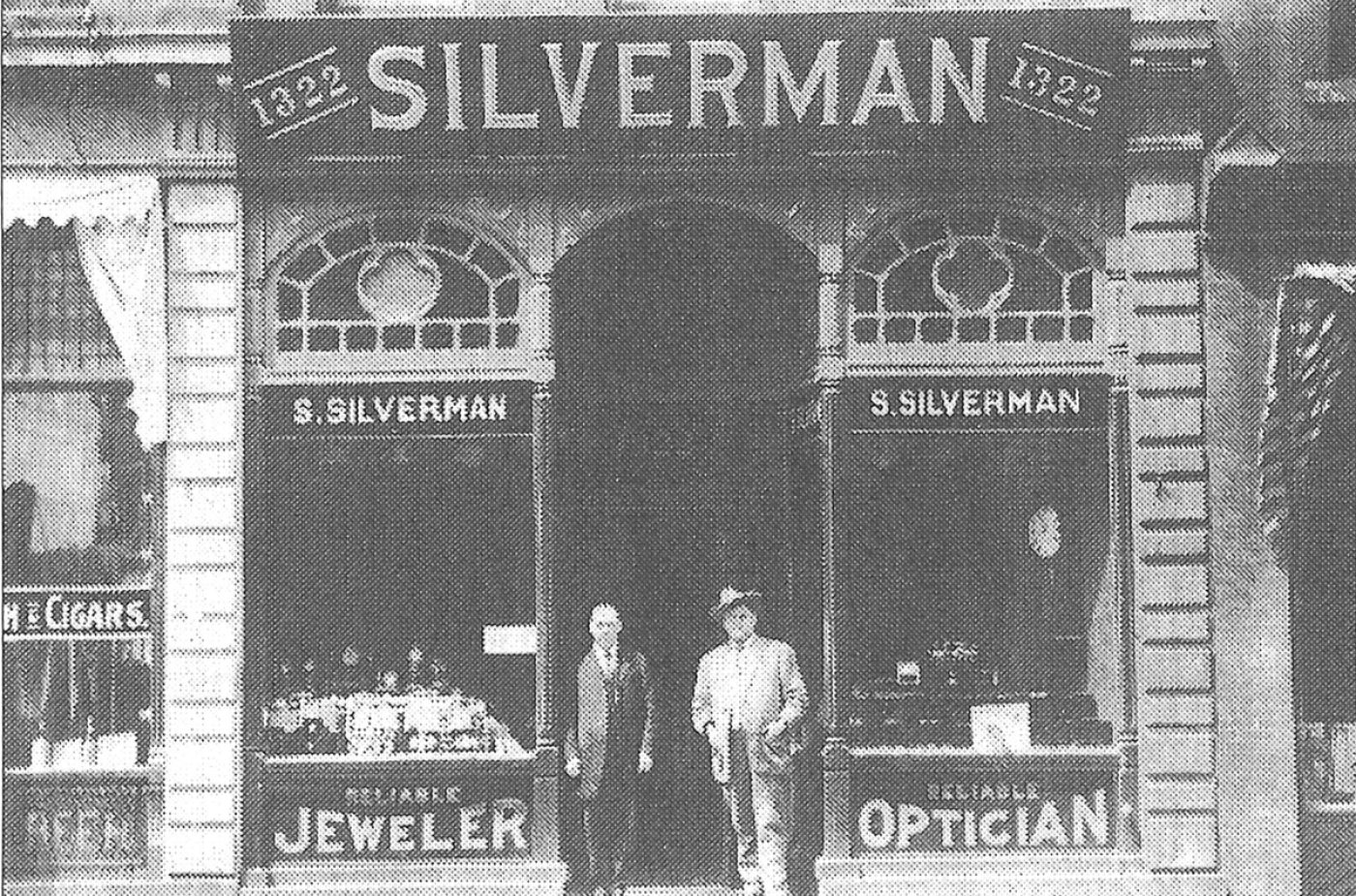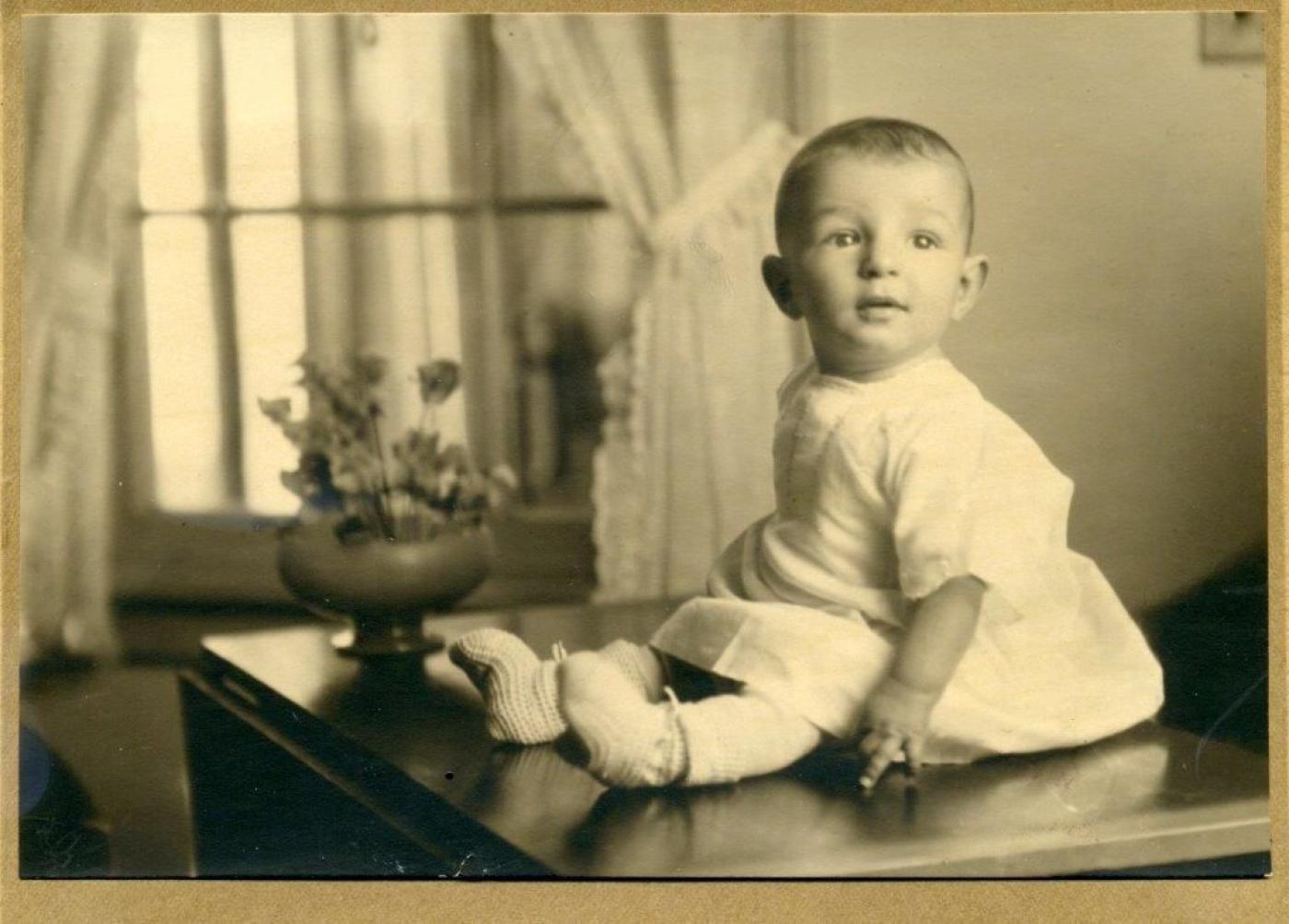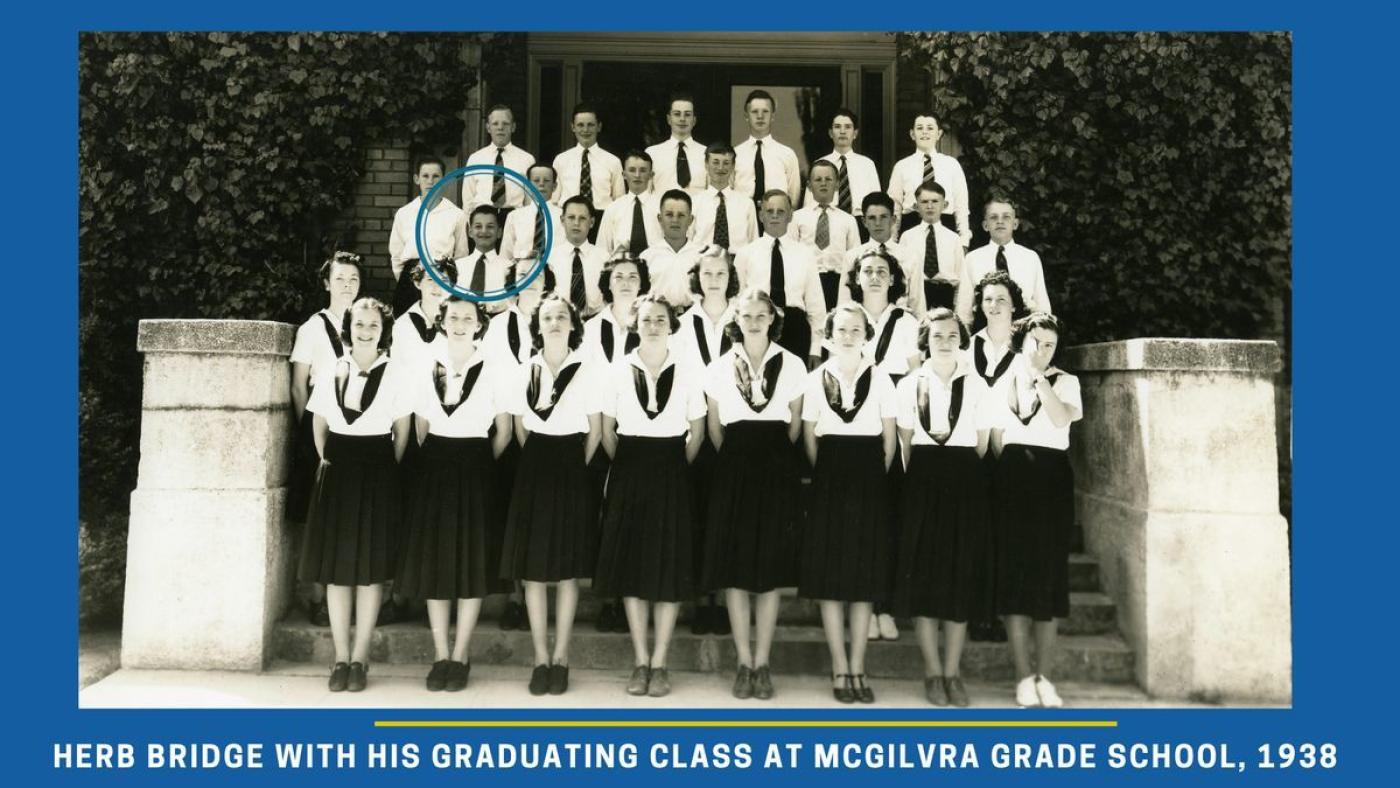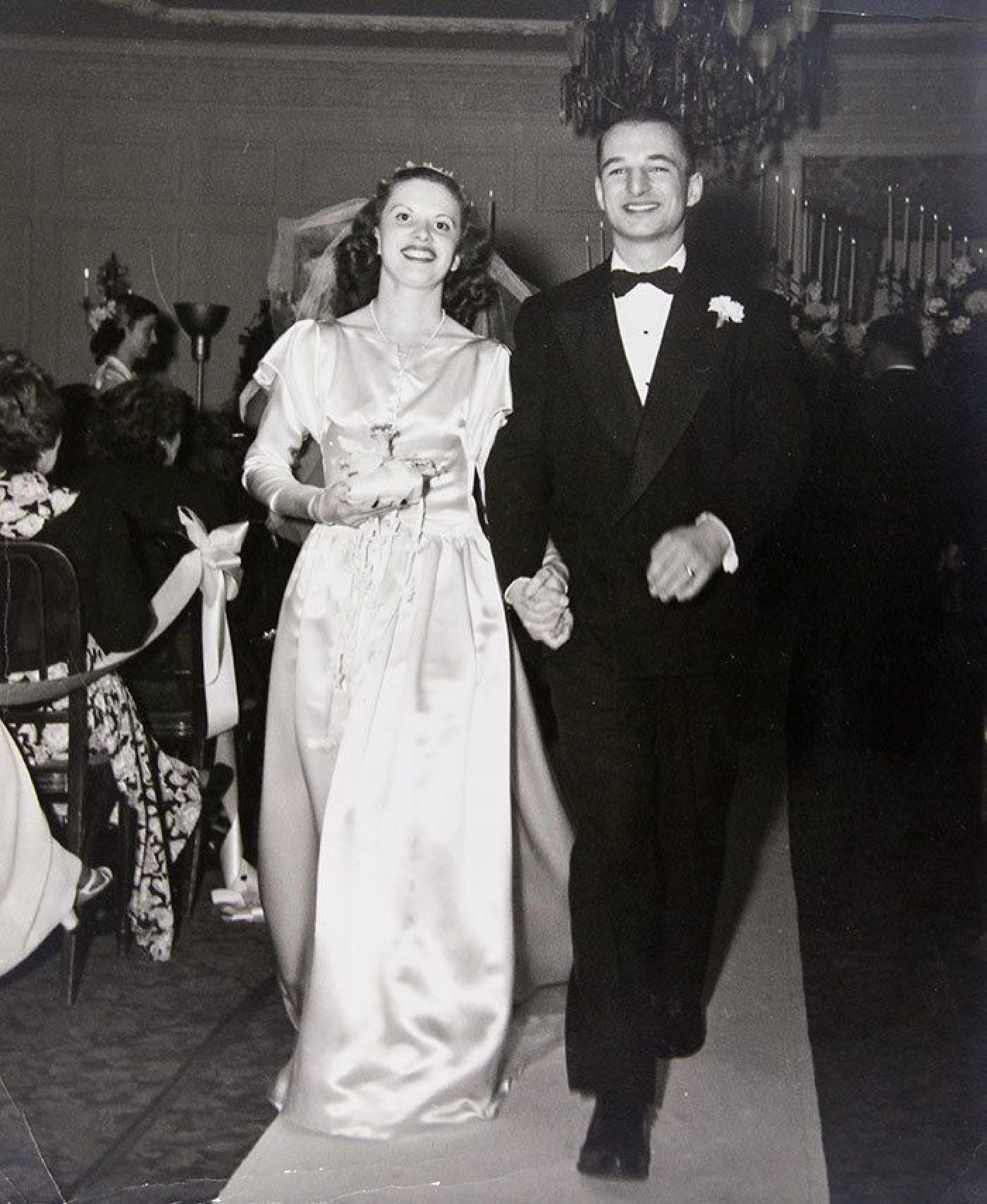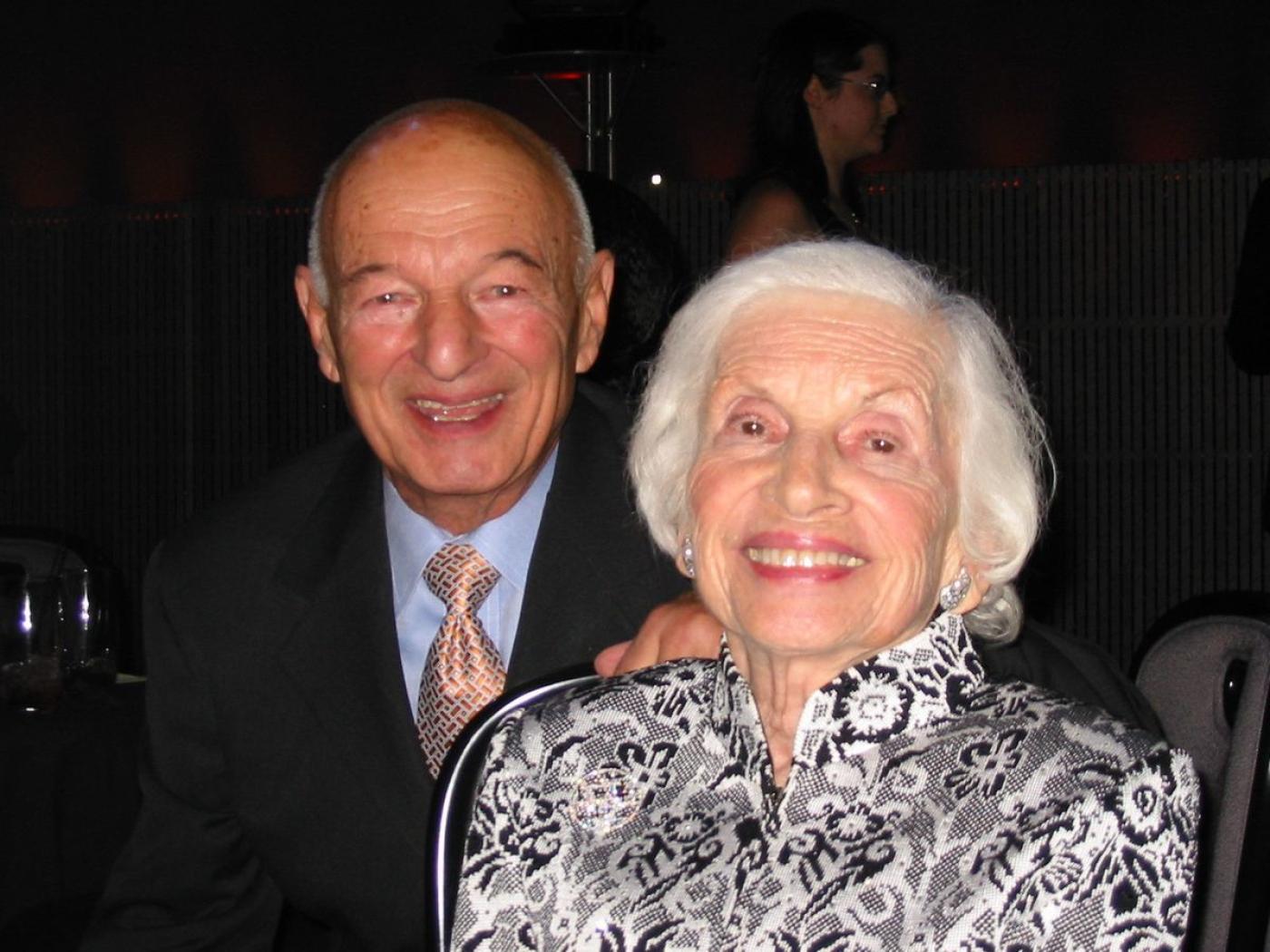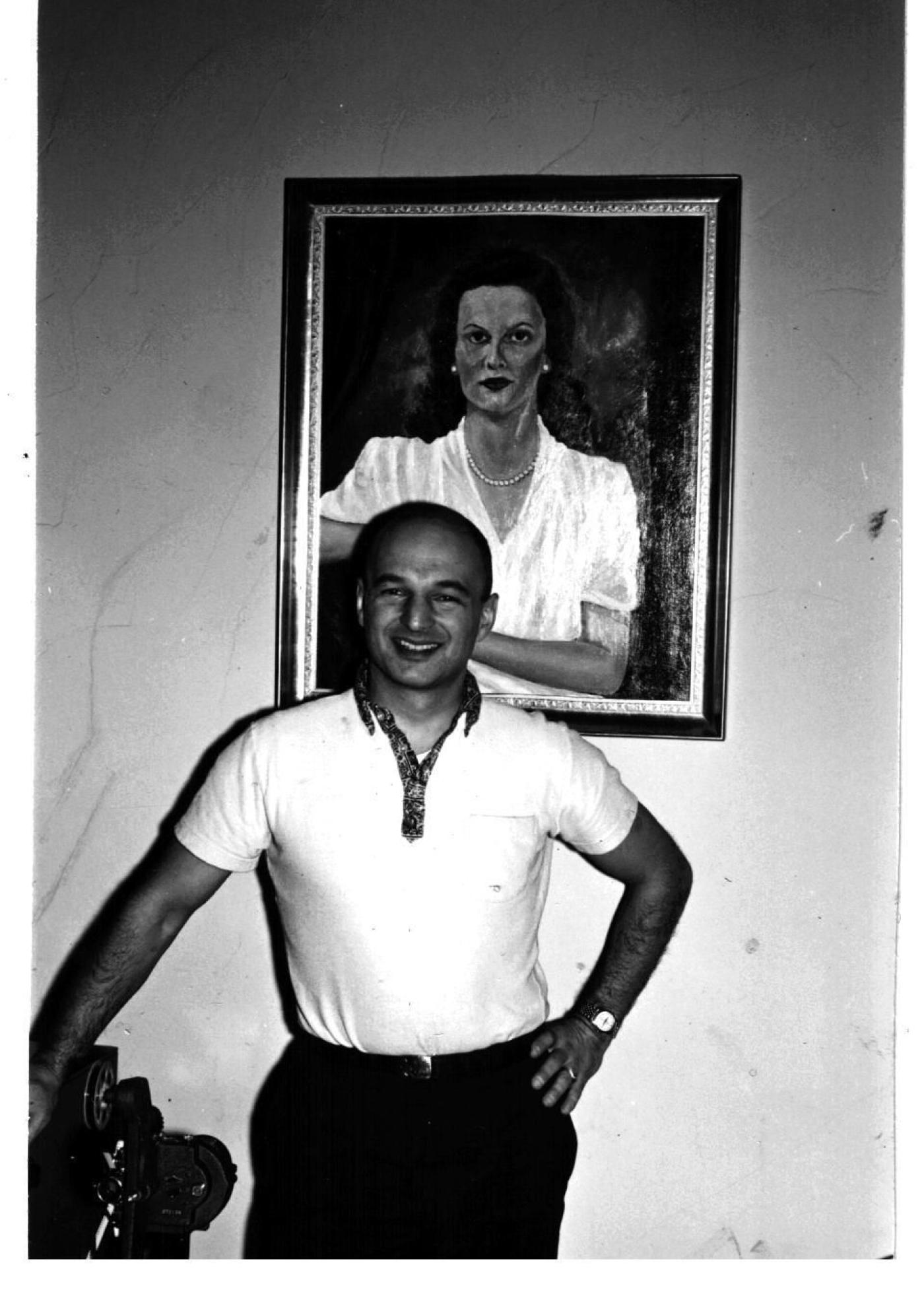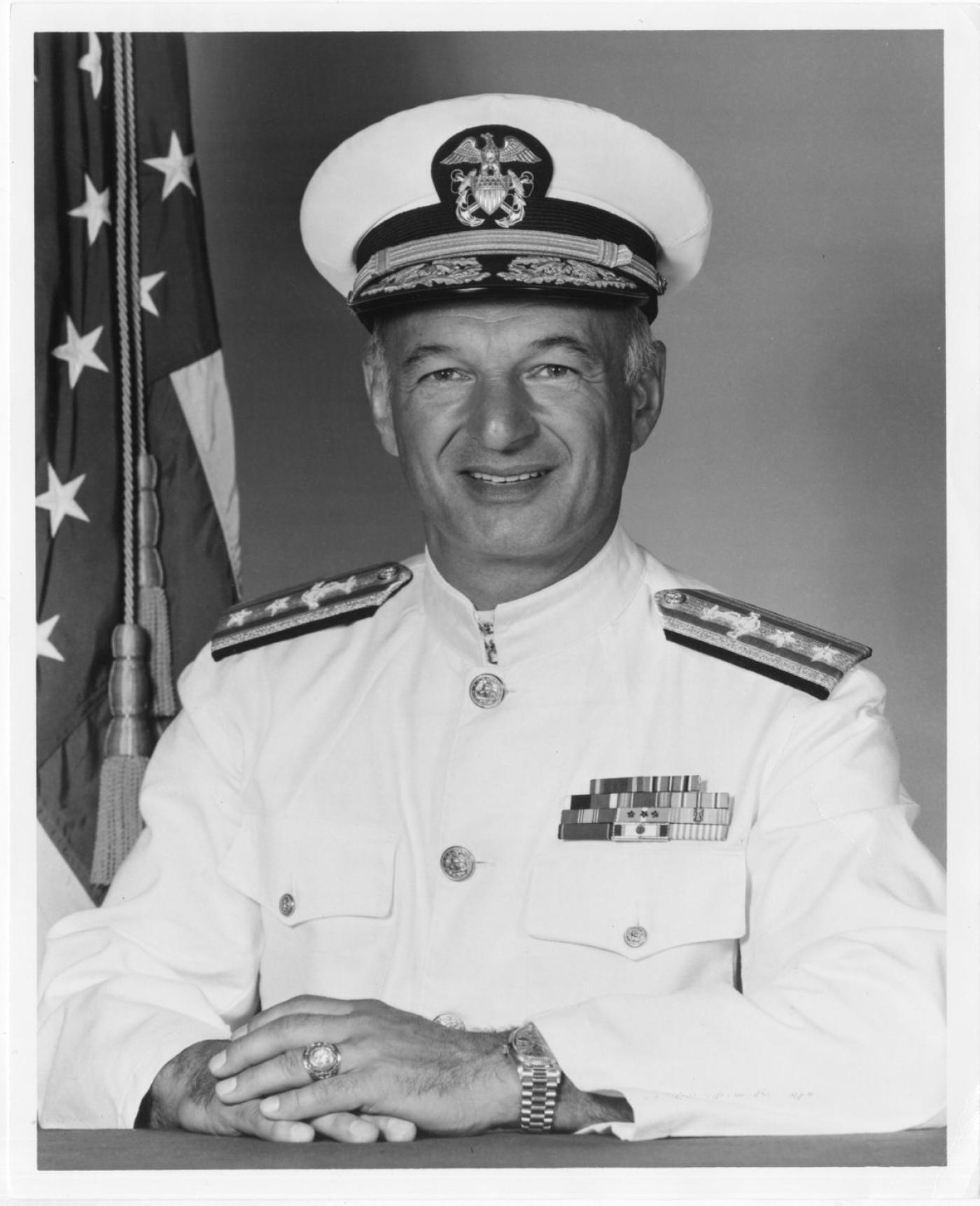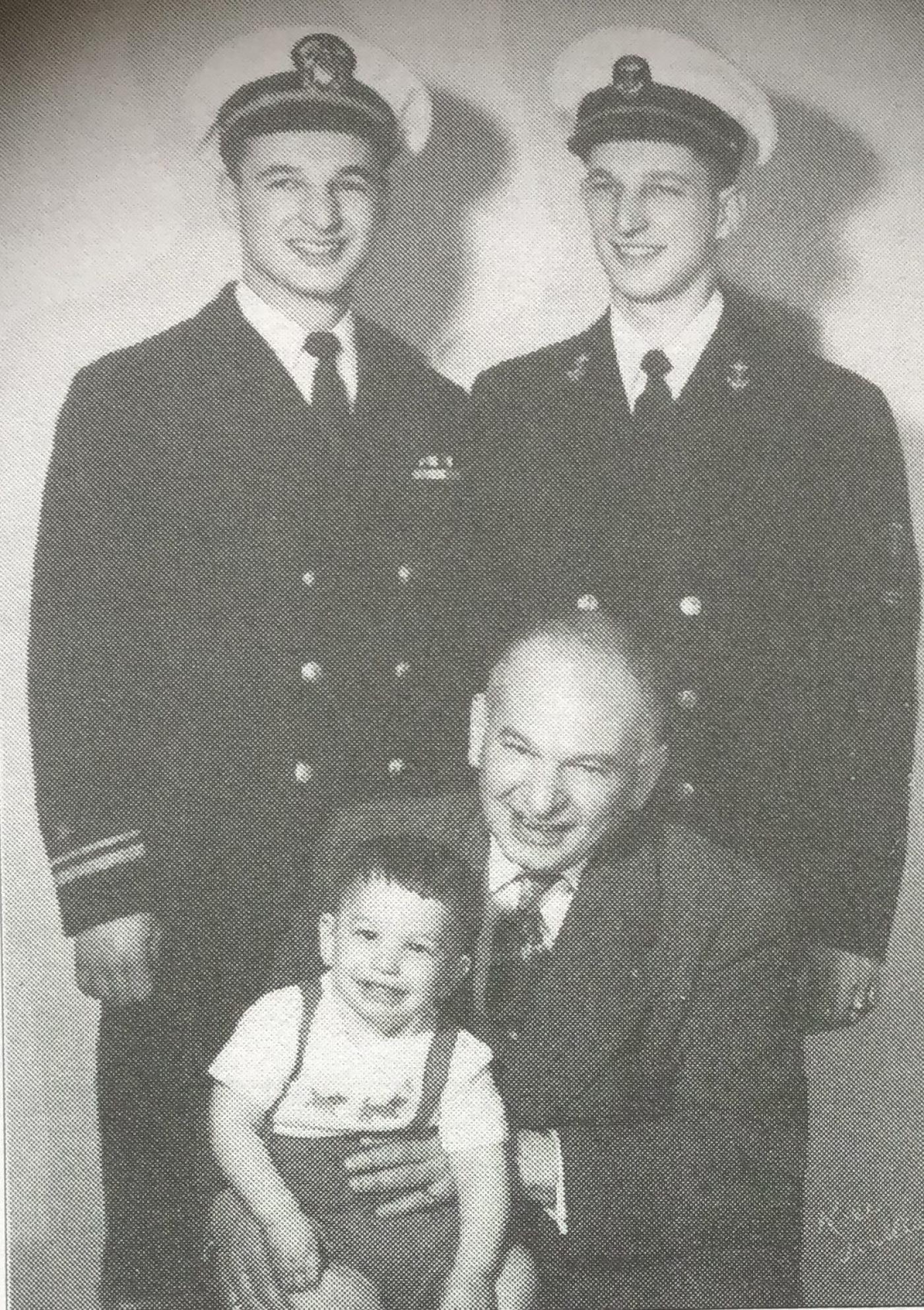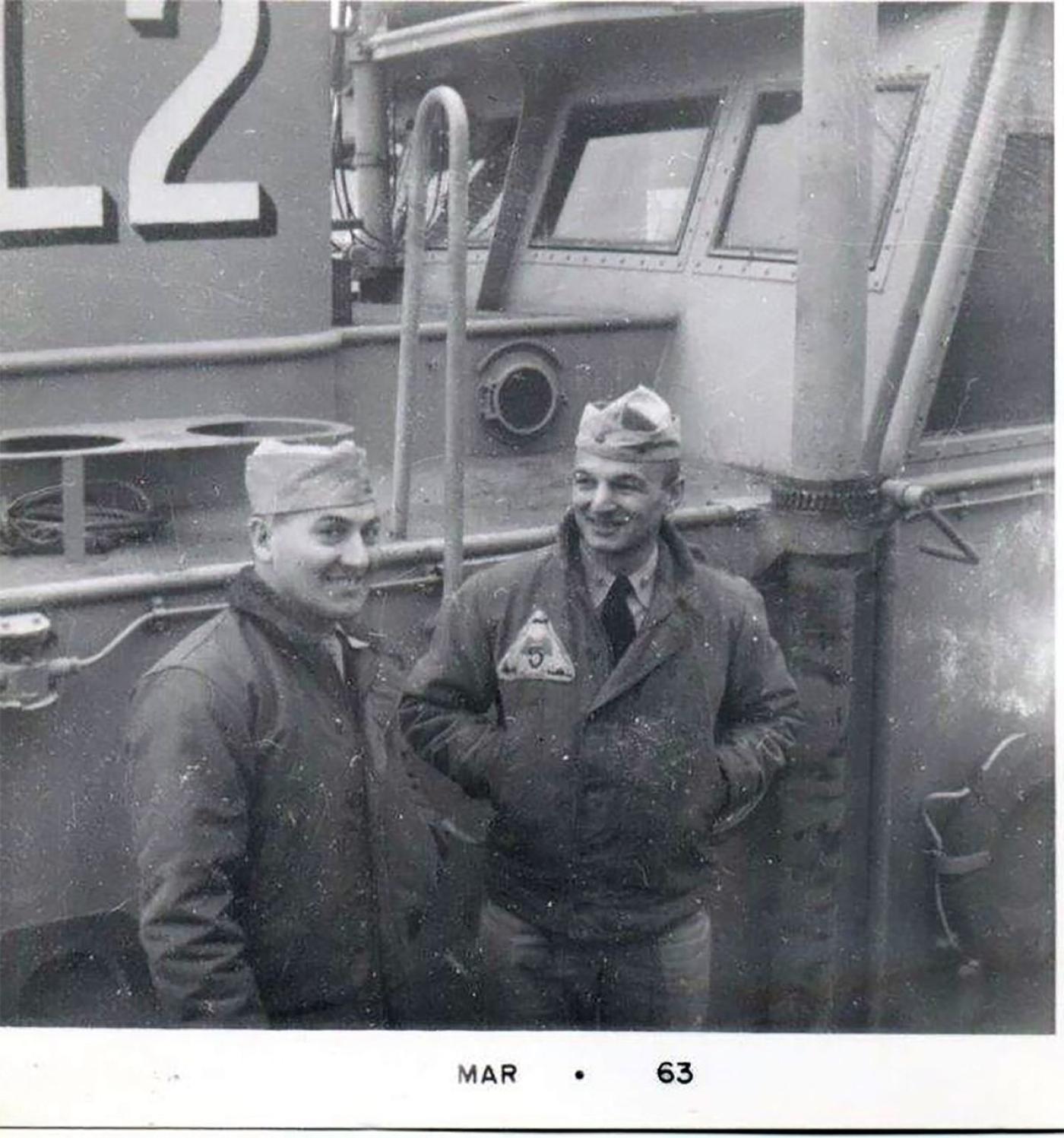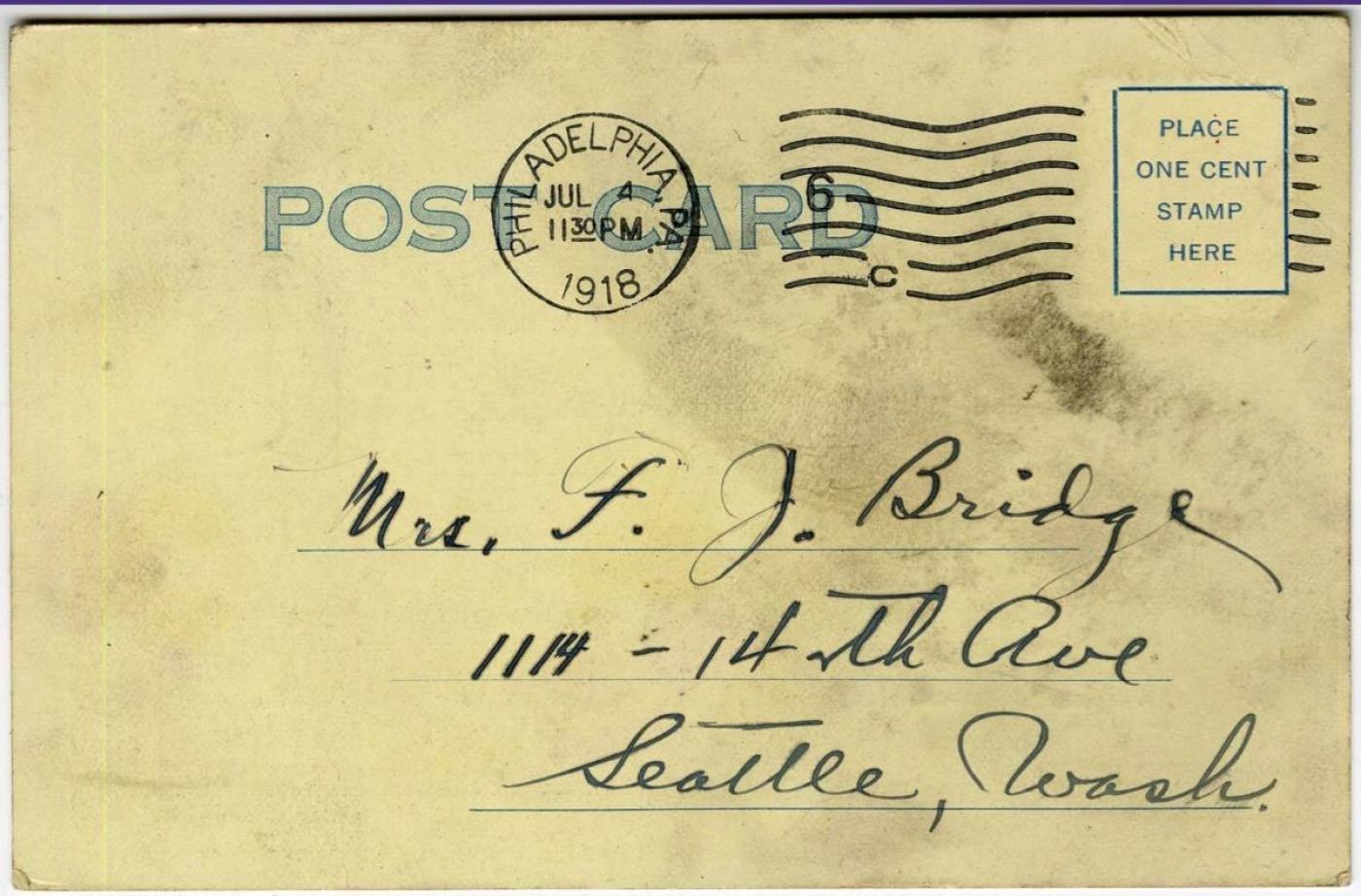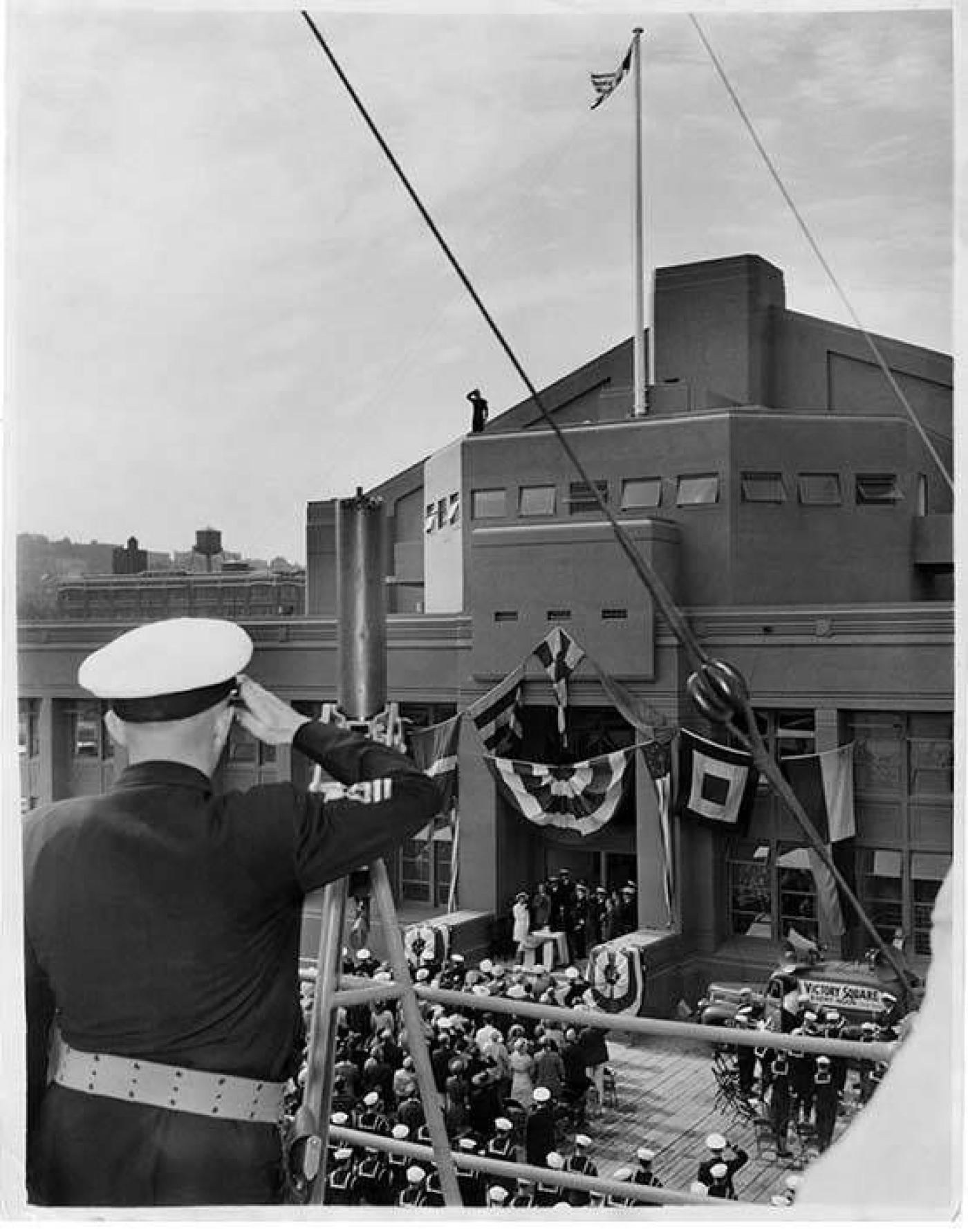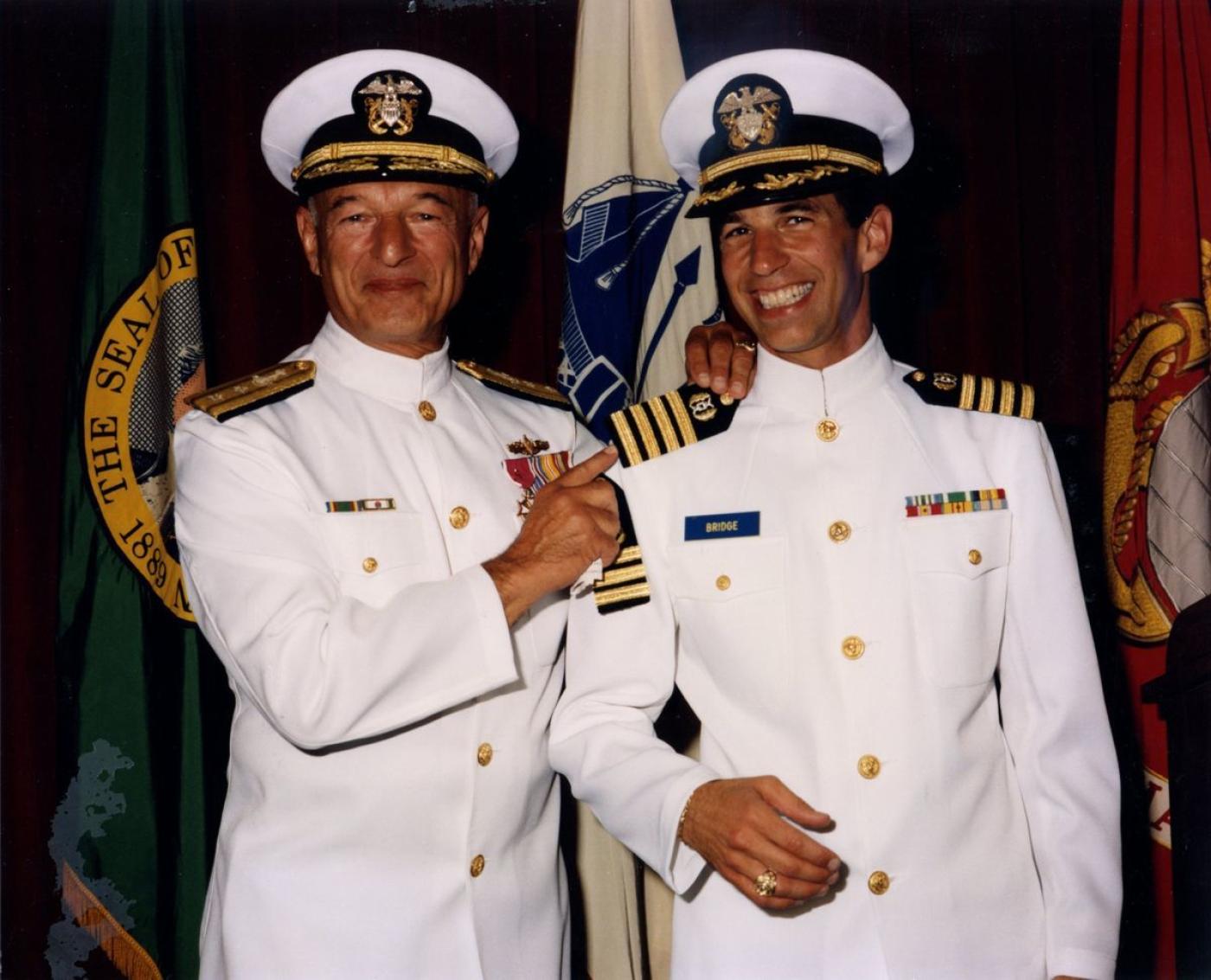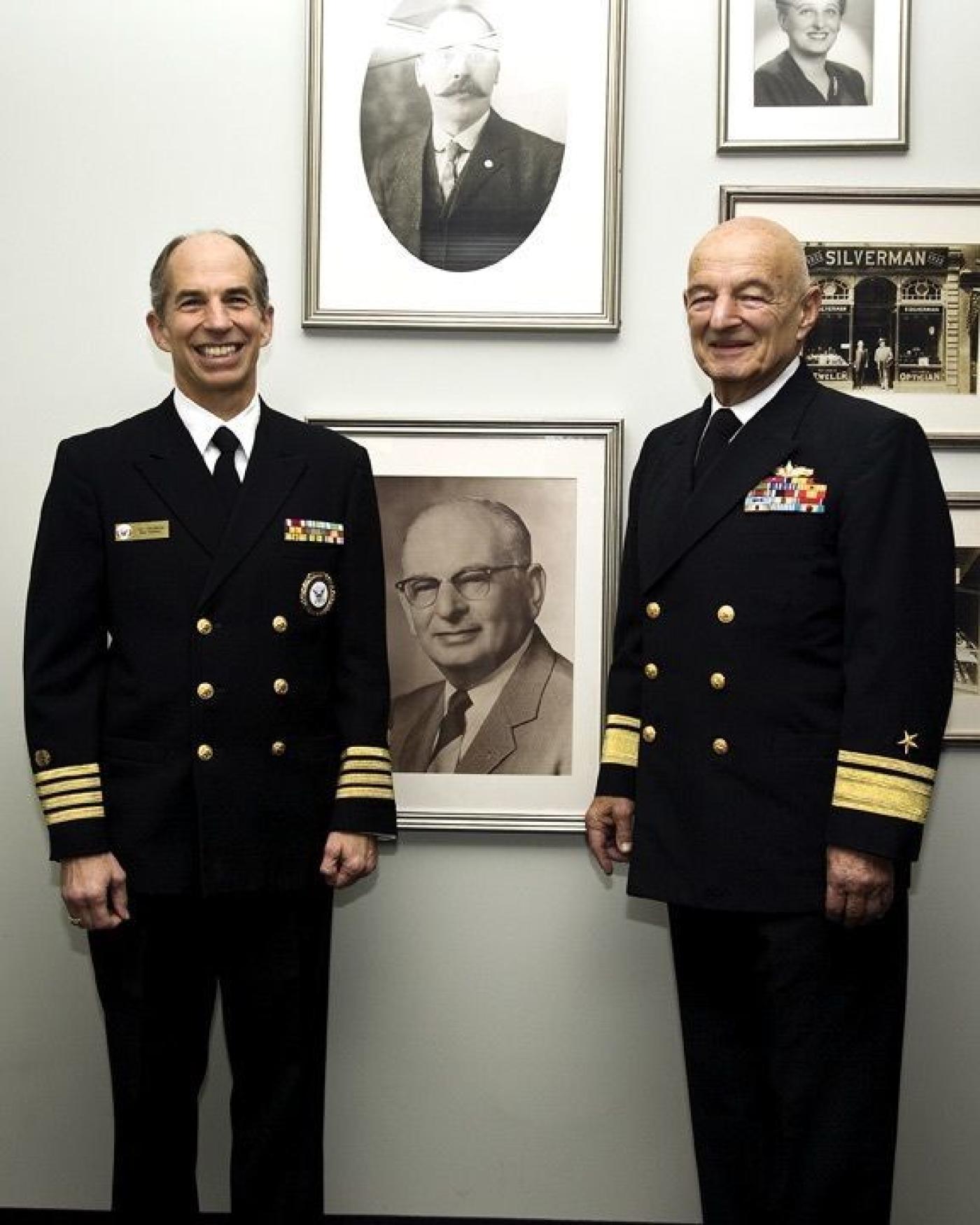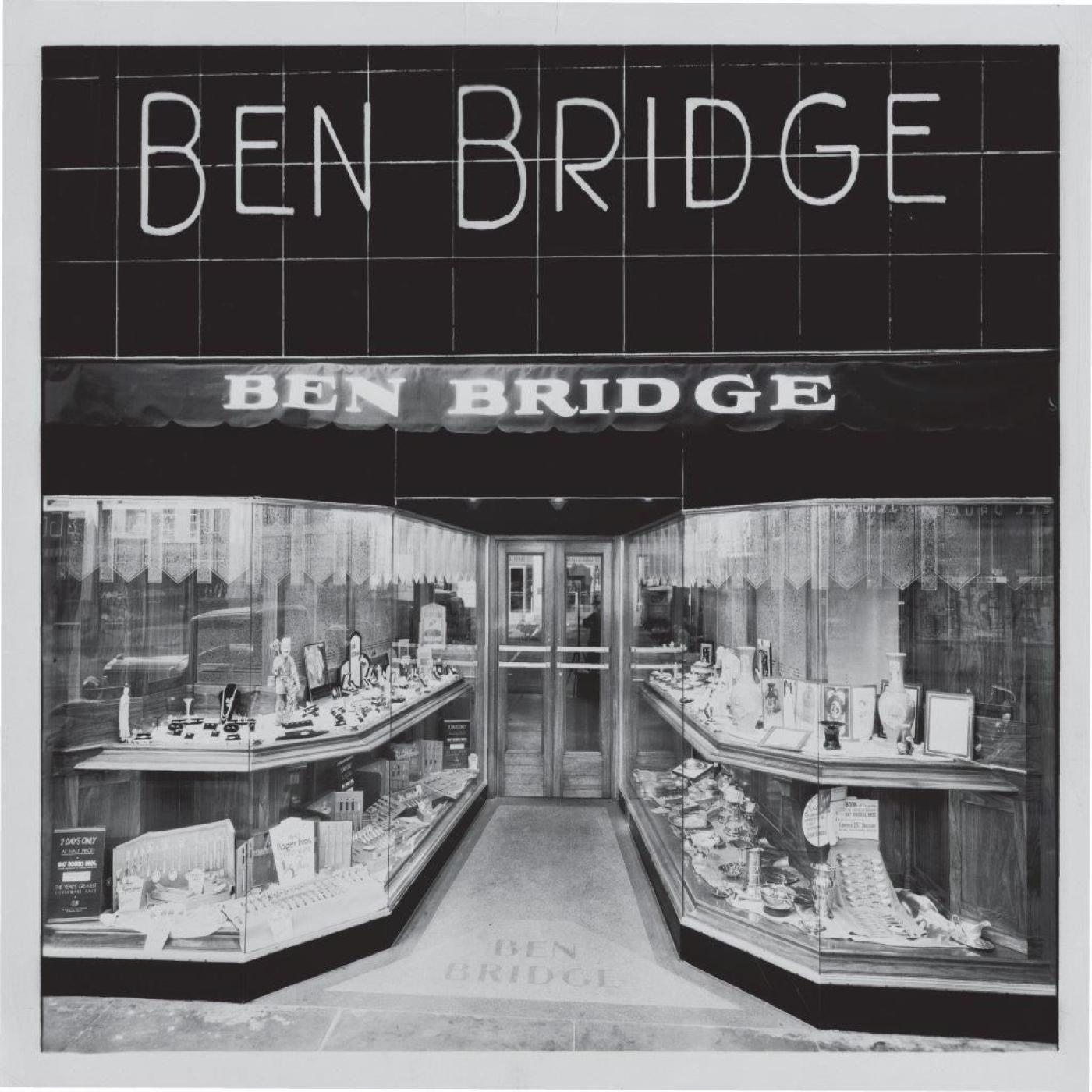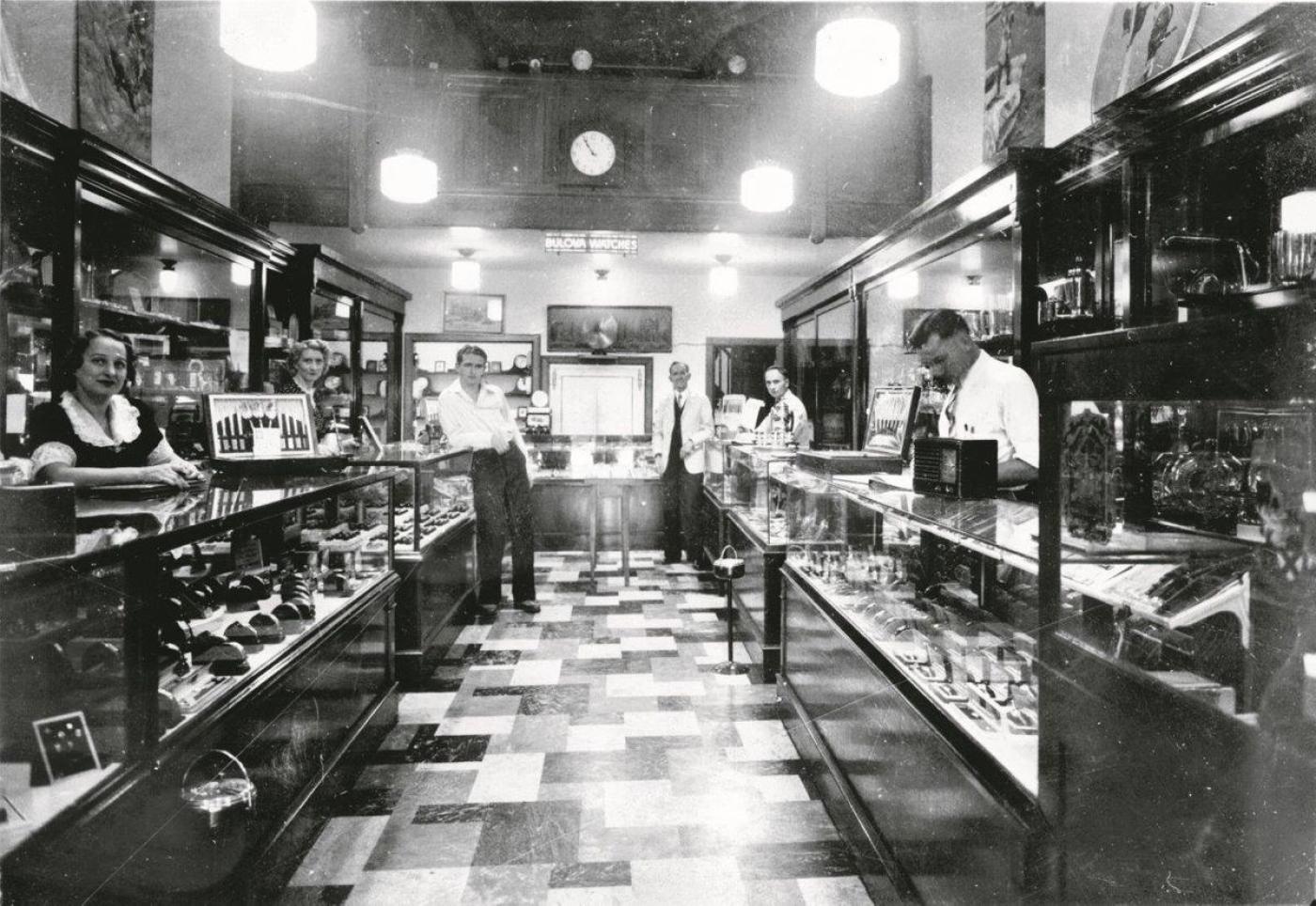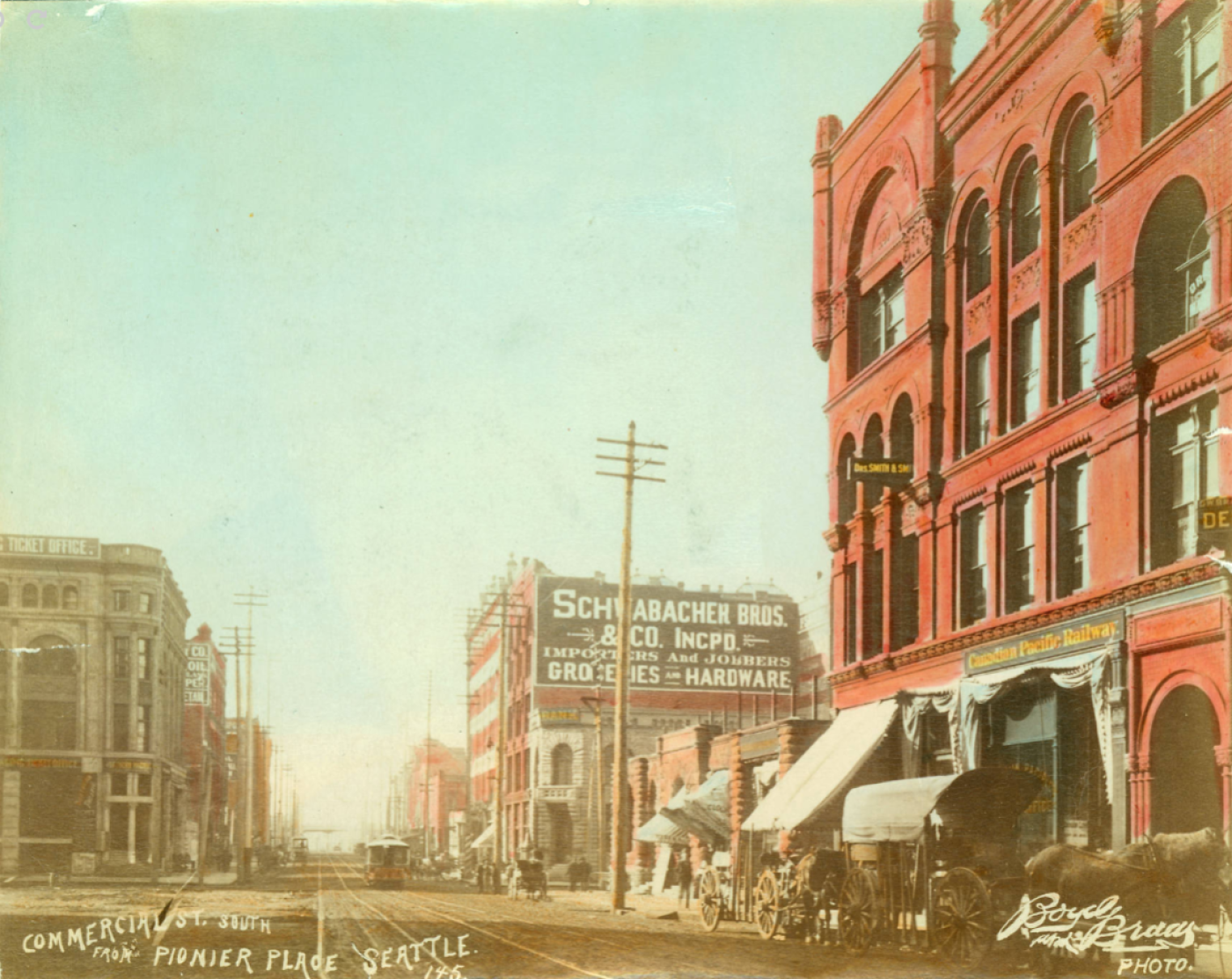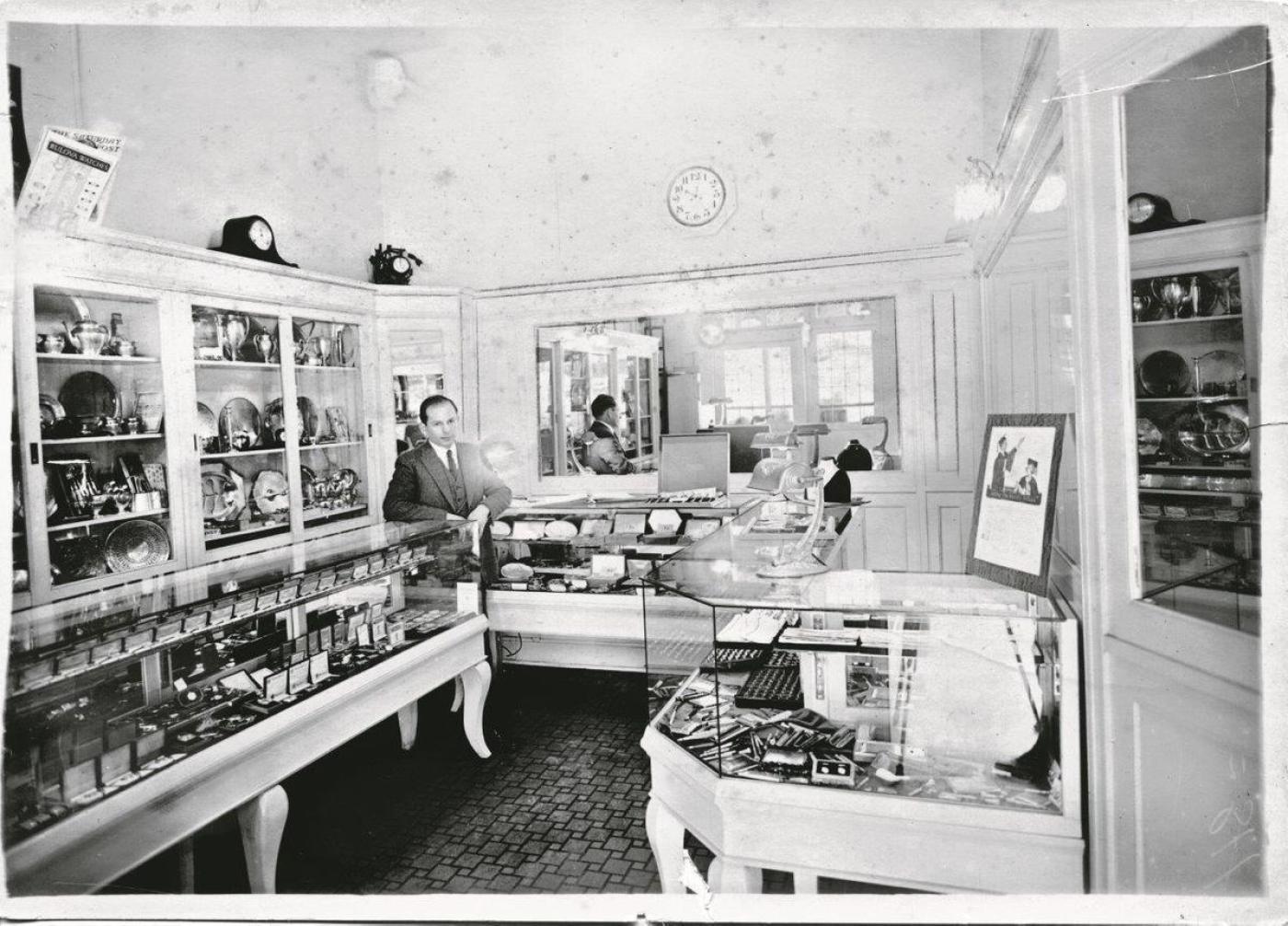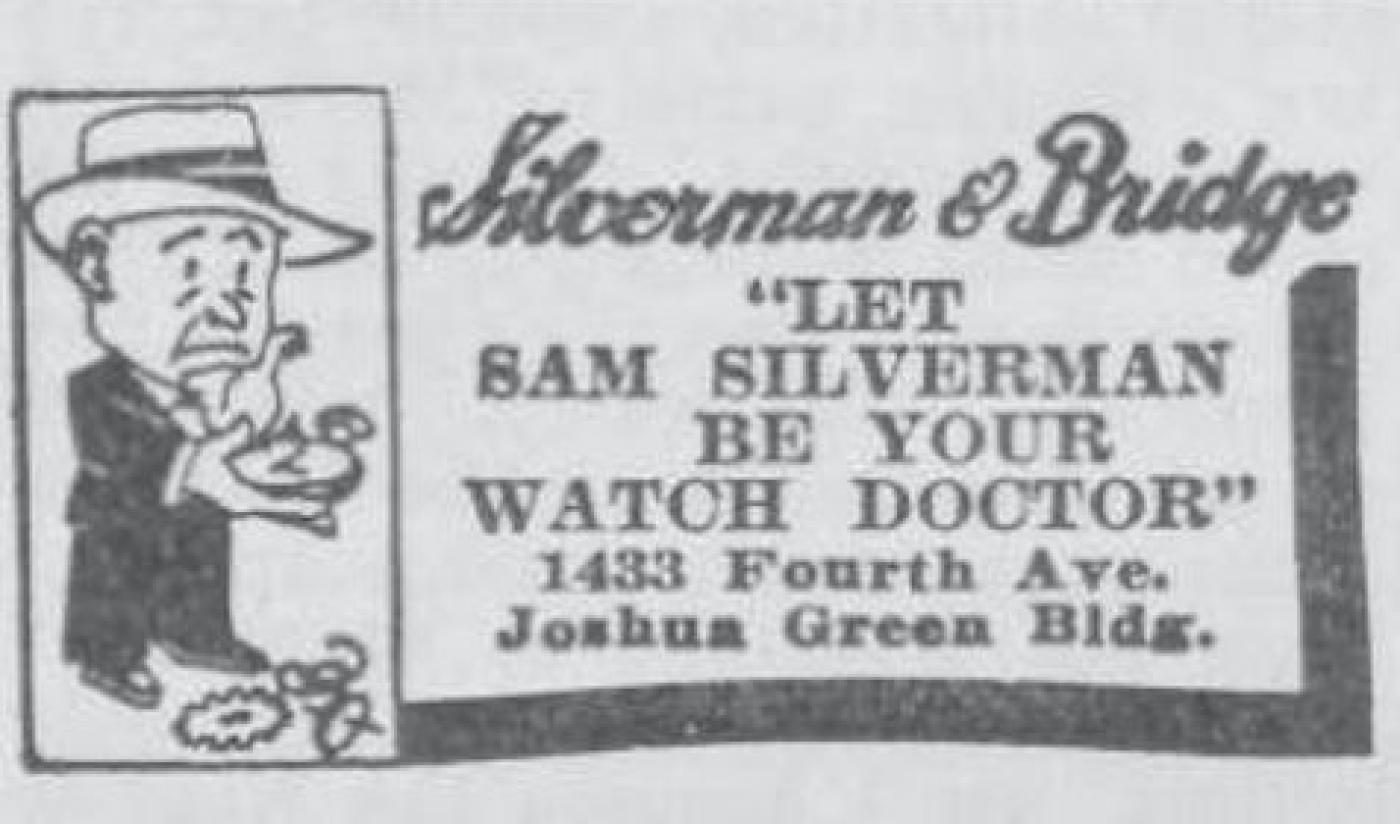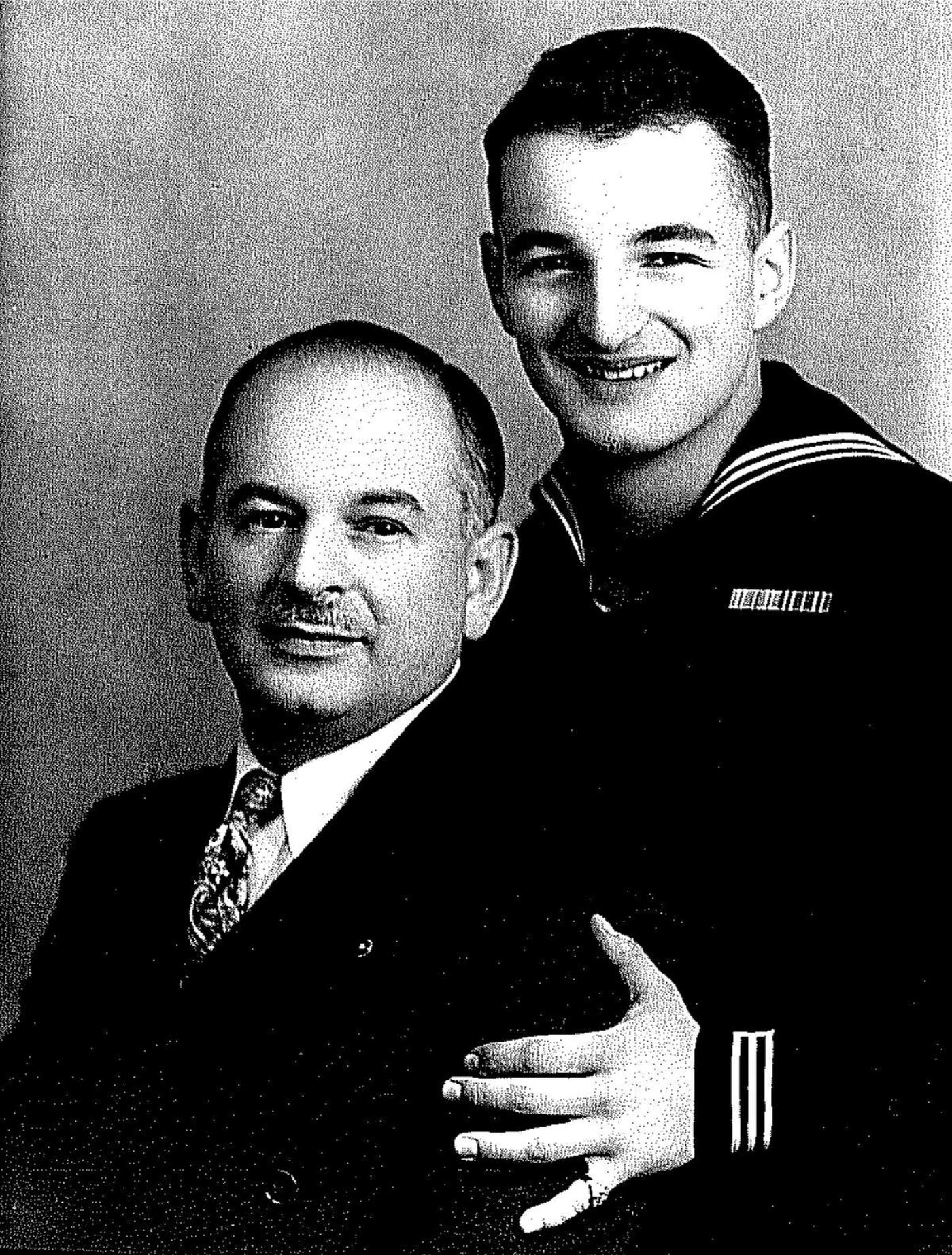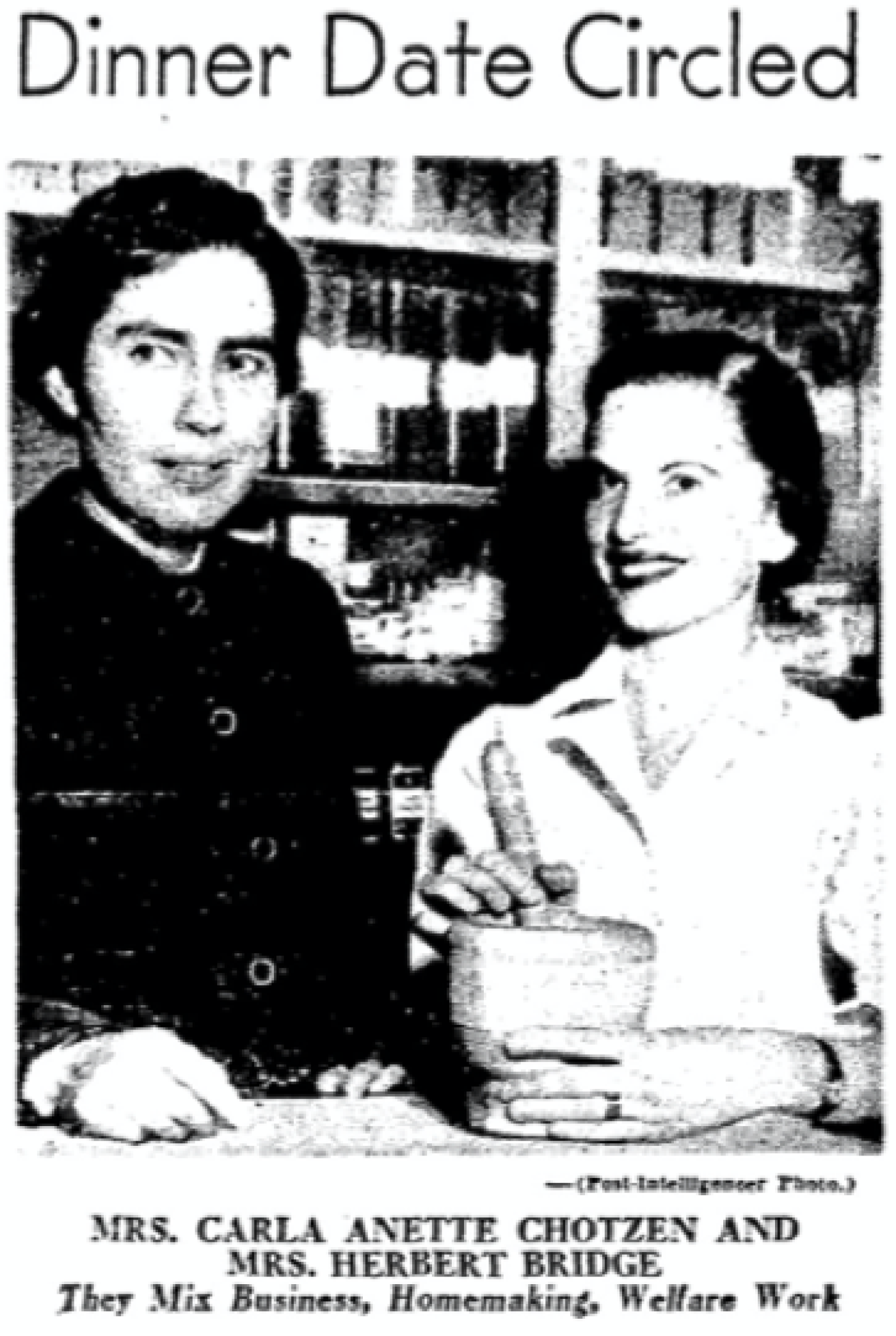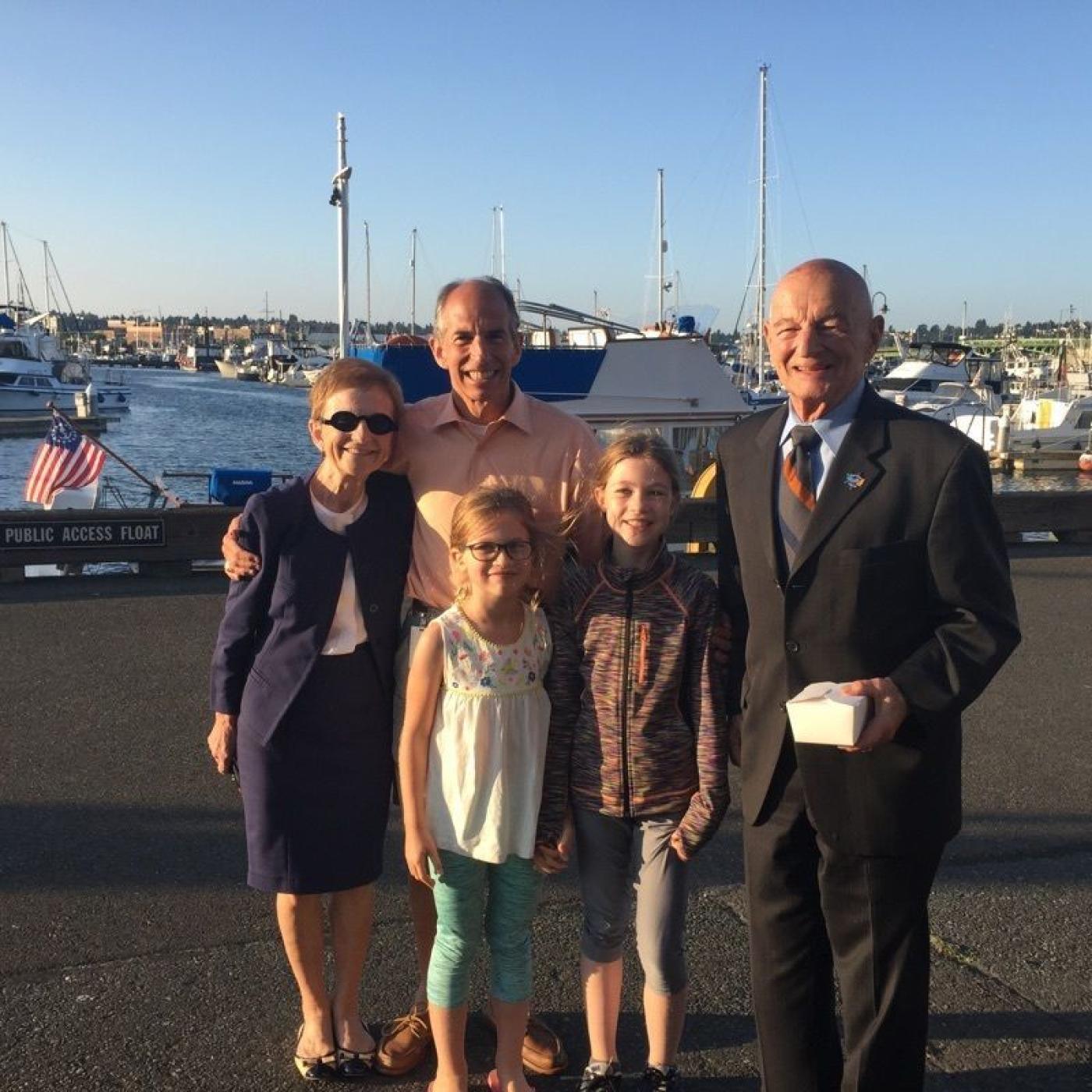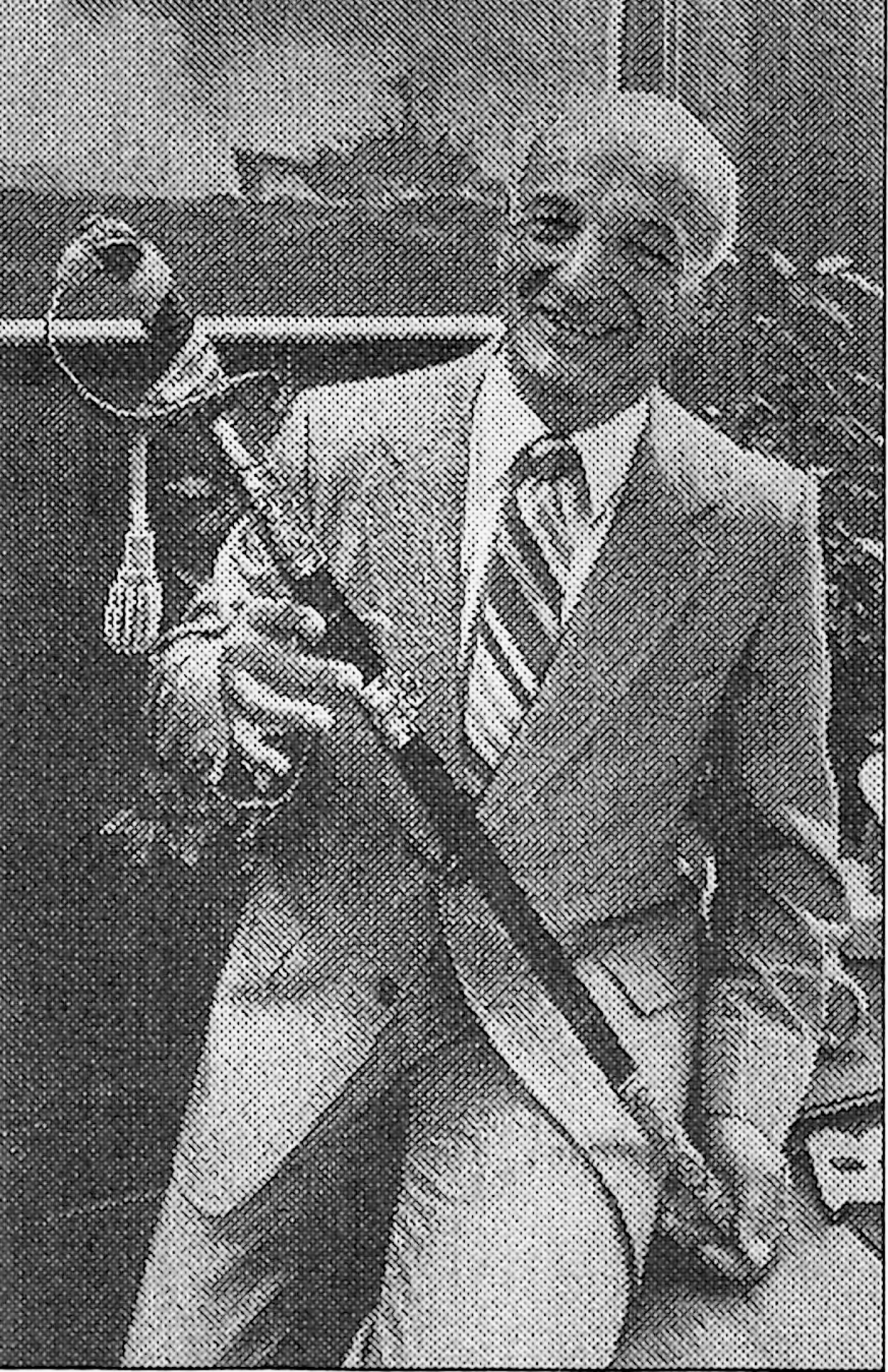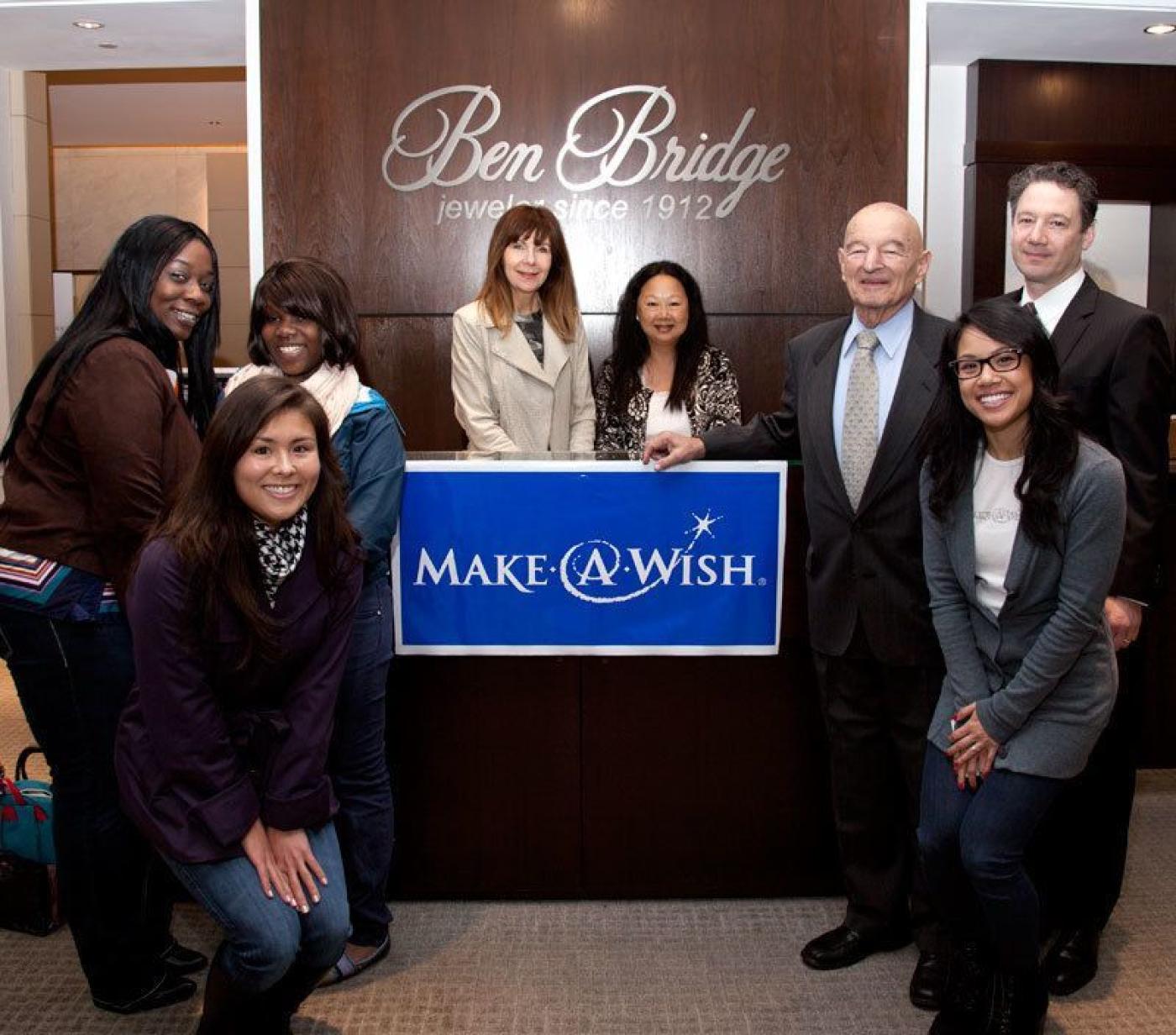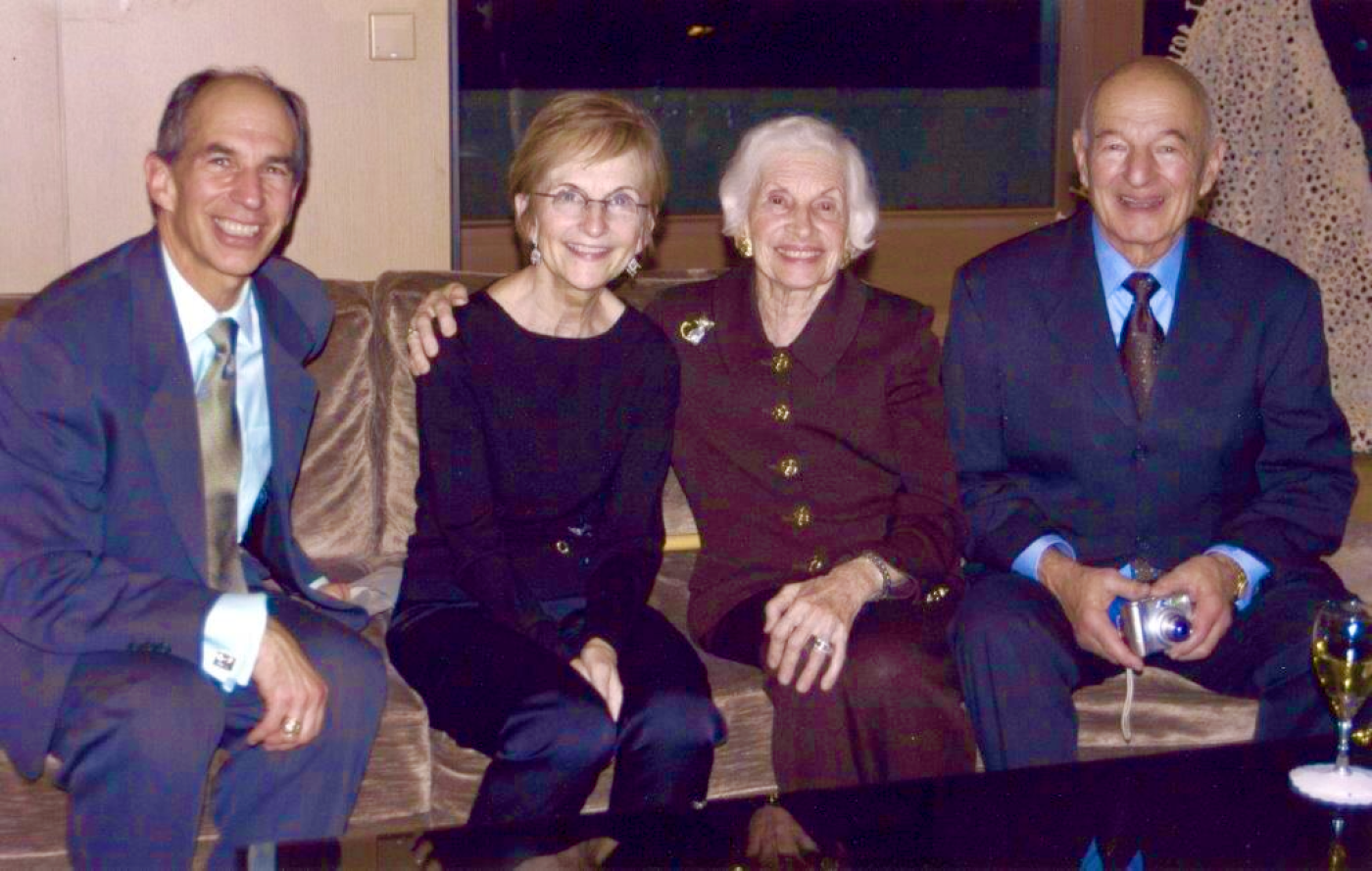Rear Admiral Herb Bridge
Herbert “Herb” Marvin Bridge (March 14, 1925 - April 2, 2018) was born in Seattle, Washington, the first child of Benjamin “Ben” and Sally (Silverman) Bridge. In 1948, Herb married Shirley Selesnick and raised a family, introducing his two sons to the jewelry business that spanned both branches of the family tree. For six decades, Herb and Shirley were active civic leaders and philanthropists—driven to action with a desire to heal, improve, and repair what is wrong. You can listen to Herb's interview at the UW Jewish Archives.
This exhibit brings together oral histories, photographs, and most vividly, digitized Bridge family home movies, providing a glimpse of Herb and Shirley’s enormous impact and inspiration.
Beginnings of Seattle's Bridge Family
Herb’s great uncle Alex Bryczkowski immigrated to the United States from Poland in 1890. Like many people in Eastern European Jewish communities, Alex sought escape from the violent pogroms that initiated in the previous decade. Upon arriving in the U.S., he changed his surname to Bridge, and embarked on a country-wide journey from New York to Seattle. He quickly set down local roots in the Pacific Northwest, prospered with an outfitting and clothing business, and became an established leader in the Jewish community.
“Near as I know, in 1890 my great uncle, my grandfather's, my paternal grandfather's brother, had left Poland at a very early age, probably around 17 or 18 to come to this country, landed in New York and proceeded to cross the country until he ran out of country in Seattle here. And he established, he was in company with at the time the Schafers and other people, was, became one of the founders of both the Bikur Cholim and the Temple De Hirsch, so we're plank owners as the Navy calls them, of both the reform and the orthodox synagogues.”
Herb Bridge Interview. March 30, 2000. Washington State Jewish Archives. University of Washington Libraries, Special Collections.
By 1906, family members, including Herb’s father Ben, Herb’s grandparents Joseph (Josef) and Fannie, and extended family joined Alex Bridge in Seattle via Poland. The first decade of the twentieth century was pivotal for Seattle. The year after the Bridge family’s arrival, the Pike Place Market was founded as a public marketplace on the waterfront. In 1909, the city hosted the Alaska–Yukon–Pacific Exposition, drawing worldwide attention. Seattle was experiencing a population boom, growing to over 237,000 residents by 1910. Among them were Jewish families with connected histories to the Bridges. Through these connections, congregations were created and entrepreneurial businesses emerged.
As explained in Family of Strangers:
“As Seattle grew, many pawnshops that had been opened by Eastern European Jewish immigrants evolved into jewelry stores, and secondhand clothing stores became first-class establishments. Max Weisfield, a role model in the pawn-to-jewelry business, created the motto, ‘If Max Weisfield can’t fix your watch, throw it away.’ He and the Friedlanders, Burnetts, Bridges, and Rivkins were some of Seattle’s most prominent Jewish-owned jewelers.” (pg. 54).
Embracing Independence
Herb Bridge attended McGilvra Grade School, graduating in 1938. He sold newspapers, including The Seattle Times & Seattle Post-Intelligencer, taking the ferry over to Kirkland to sell to commuters. He also sold magazines.
From there, the family bought a home in Mount Baker. Herb attended Franklin High School, graduating in 1942. He had saved enough money to buy a car his senior year, a 1932 Plymouth that he adored. Among his activities, Herb was on the track team, anglers’ club, and debate team. He also acted as the school’s publicity chairman.
During this time, the Bridge family celebrated Herb’s bar mitzvah, where he recalls receiving a very special gift. “My folks’ friends pitched in together and gave me everything I’d need to make a home camera, projector and a screen. That was really something in 1938.... Thanks to 20 or so friends, we have movies that go back to 1938.”
Building Bridges (pg. 38)
For his bar mitzvah, Herb Bridge received a video camera and lighting equipment. He was transfixed.
He recounted:
“My folks’ friends pitched in together and gave me everything I’d need to make a home camera, projector, and a screen. That was really something in 1938... Thanks to 20 or so friends we have movies that go back to 1938.” Building Bridges
Since that time, Mr. Bridge has created and appeared in many films, including family trips across the globe, his navy career with fellow service members, scenes at the Ben Bridge Jeweler downtown Seattle store with his family and co-workers, and other important moments.
From Franklin High School, Herb then attended the University of Washington. To further channel his restless energy, Herb stepped into the ring for collegiate boxing, while also continuing to help with his family’s store.
The Bridge Family Extended
Herb married Shirley Selesnick on January 25, 1948, which he describes as one of the happiest days of his life. Shirley was one of the state’s first female pharmacists. Their first apartment was located on Seattle’s First Hill at 604 East Union, and they later moved to Montlake. In 1950, their son Jon Bridge was born.
Shirley’s leadership included her membership with the League of Women Voters as well as joining the Women’s University Club, which was rare for a Jewish woman to join at that time.
To read more about Shirley's incredible life and accomplishments please see her tribute by University of Washington's School of Medicine: "When You Really Want Something, You Don't Give Up."
For more information on Shirley's pioneering work as a pharmacist and her relationship with Herb, read her Seattle Story with the Jewish Women's Archive.
Navy Years and Military Career
“Patriotism is a word that I believe is overused and misused in today’s political climate, but it’s a fact that my family taught me to appreciate this country, and I do. And I owe this country because it’s been good to me.” Building Bridges (pg. 92)
Military service has been a multi-generational endeavor for the Bridge family. Herb’s father Ben enlisted in the Navy, serving in World War I as a radio electrician and submarine chaser.
"I liked the Navy. I liked pretty much everything about it, from the uniforms to working with like-minded people for a higher cause. And I liked being an officer. I liked the respect you command as an officer; but more than that, I liked the strong sense of achievement that comes with it. The ultimate draw to the Navy, though, was my sense of patriotism. My father and and my ancestors' stories gave me a deep appreciation for the freedoms and opportunities we enjoy in this country. " Building Bridges (pg. 62)
Career Extended
“1917 was when we became involved and Dad promptly enlisted in the Navy and had a very illustrious career as an enlisted man in the Navy. He was, he became a radio electrician at a time when radio code was very, very new. They had sent him to Harvard to learn it and he was assigned to a submarine chaser in the, that was in the Adriatic covering for French, British and Italian naval units against the Austrian-Hungarians. And the stories, of course, he wrote, he was very prolific and he wrote a complete diary. He had exciting and interesting times...
And that sword over there represents the commanding officer's sword that was presented to my dad. Dad tried to give it back to him in the surrender of this battleship. Interestingly enough, when I needed a sword, which was way after World War II, for the various ceremonial things that I used, I was too cheap to buy a sword so I used this one until I realized that this was really an heirloom. Here was a war heirloom that was personally given my dad and I had used it simply because I didn't want to spend the money on a new one. But I used it throughout my Navy career and of course it's attracted a lot of compliments, a lot of attention. It's an exciting thing.”
Herb Bridge Interview. March 30, 2000. Washington State Jewish Archives. University of Washington Libraries, Special Collections.
Benjamin Bridge postcard from Old St. Stephen’s Club in Philadelphia to his family confirming his well being during World War I, July 4, 1918.
“In another letter, Bridge explains that the soldiers filled out these cards before they headed to the European theatre. Once they had arrived safely (or after a certain period of time had passed), the St. Stephen’s Club was notified by military officials, and the club then mailed out their letters. This allowed for the families to receive news about their loved ones in a slightly shorter amount of time than would have taken for news to be sent directly from Europe.” Photo Courtesy University of Washington Libraries, Special Collections
Before his 18th birthday, Herb enlisted in the Navy on September 3, 1942. The following year he was selected to complete the University of Washington’s officer training program, one of only 12 students. Herb later attended Military War College, and earned his commission in the Pacific Ocean aboard the escort carrier USS Breton in 1945.
The following year, Herb participated in Operation Magic Carpet Ride, a massive post World War II mission to bring home approximately 8 million military personnel. Herb was discharged in 1946 with the rank of Lieutenant Junior Grade.
While touring through Japan, Herb also found time to climb Mount Fuji. Twice. After returning home to reunite with his family, Herb was called again to serve. In 1950, Herb was assigned for duty in the Korean War, with the Tactical Air Control Group. Herb continued to serve after the war.
Herb’s son Jon Bridge graduated ROTC (Reserve Officer Training Corps) & was also at the University of Washington. Jon joined with Herb’s encouragement to become an officer, just as Ben Bridge did with Herb.
Herb's Connection to MOHAI
Herb connects his time with the Reserves to today’s Museum of History and Industry (MOHAI) in South Lake Union:
“For many years my Reserve group met every Tuesday night down on Lake Union in the Reserve Center, what today is the MOHAI, Museum of History and Industry. It was a fun commute for me because I’d jump in my boat and ride across the lake. Bob and I owned a speed boat together and we moored it on Lake Union near University Bridge. I’d bring Jon and/or Dan along with me, and they’d run around and play on the floor of the big auditorium. If there was a ship or a sub they’d get to go aboard and see that, too.” Building Bridges (pg. 125)
In 1942 the Works Progress Administration built the Naval Reserve Armory on Lake Union as an Advanced Naval Training School during World War II. Designed by Seattle architect William R. Grant and B. Marcus Priteca, the building was decommissioned after the war, and disestablished in 1994. The building was renovated in 2012 to become the new home for the Museum of History & Industry.
Family Means Business
Family and business are deeply intertwined for Seattle’s Bridges, exceeding a centennial. Reflecting the interconnections of Seattle’s Jewish families, both branches of Herb Bridge’s family tree come together to establish Ben Bridge Jeweler’s foundation, core values, and success. With now over 100 worldwide locations, Ben Bridge Jeweler has adapted in response to local and global events, from World Wars and pandemics, to earthquakes and Seattle’s boom & bust trajectory.
Herb’s father Ben Bridge worked for Schwabacher & Bros., a prominent local Jewish family whose business outfitted many customers seeking fortune during the Klondike Gold Rush. They offered canned goods, cigar, coffee, candy and other provisions. Headquartered at First and Yesler Way in Seattle’s Pioneer Square, they also had Alaskan agents to make sales onsite.
While working at Schwabacher & Bros., Ben Bridge was mentored by Company Vice-President & President Nathan Eckstein and Bailey Gatzert, Seattle’s eighth mayor.
As explained in Family of Strangers:
“As Seattle grew, many pawnshops that had been opened by Eastern European Jewish immigrants evolved into jewelry stores, and secondhand clothing stores became first-class establishments. Max Weisfield, a role model in the pawn-to-jewelry business, created the motto, ‘If Max Weisfield can’t fix your watch, throw it away.’ He and the Friedlanders, Burnetts, Bridges, and Rivkins were some of Seattle’s most prominent Jewish-owned jewelers.” (pg. 54)
Cone, Molly, Howard Droker and Jacqueline B. Williams. Family of Strangers. University of Washington Press; First Edition (July 1, 2003).
After serving in World War I, Ben Bridge returned home. He married Sally Silverman in 1922.
Herb’s maternal branch of the family also involves another great uncle as a central figure. Charlie Silverman established Northwest Luggage, and later brought family members, including Herb’s grandfather Samuel Silverman, to Seattle. In 1912, Samuel began the namesake S. Silverman & Company, a jewelry store located on Third Avenue in Downtown Seattle. This was the predecessor to Ben Bridge Jeweler.
Herb Bridge recalls that Samuel Silverman “... was not only a skilled watchmaker, and very well known, but he had a very nice store and he was an optometrist in addition... [a]nd that was something that was allied with the jewelry store. We have the early pictures of the watches with my grandma being in the store. She was a very beautiful woman. My mother and grandmother were beautiful women, unfortunately we took after our fathers in the looks department. But they were engaging, smart matriarchal type women.”
Herb Bridge Interview. March 30, 2000. Washington State Jewish Archives. University of Washington Libraries, Special Collections.
Ben Bridge Jeweler Family Business
For his 18th Birthday, Ben Bridge gifted his son Herb with ownership shares of the family company. Herb asked his parents for Bob to be equal owner in business. Herb reflects - “We were a good team, Bob and I, and always worked together for the business’ best interest.” Building Bridges (pg. 91)
The teamwork was evident, as Ben Bridge left the business in the hands of his sons in 1954. Herb was 29 and Bob was 23.
In terms of dividing up the duties Herb recalls: “I was a salesman of the team but Bob had more business savvy, with his business degree, his experience as a supply officer, and his attention to detail. The two of us were working hard to find our way, and we felt there was a lot riding on our shoulders.” Building Bridges, (pg. 108)
Learning delegation from his experiences in the Navy, Herb looked to share duties and responsibilities to advance the careers of promising employees and expand the business.
“To us, it was all about the people. We wanted employees who cared, who would act as the Ben Bridge of his store or the Sally Bridge of her store.” Building Bridges (pg. 114)
Herb explains further: “When it came to advancement, I was adamant that there be no discrimination at all; if there was, it would be in favor of the minority simply because of that the fact that’s the direction we want to go. In our case, that was usually with women. We’ve always had more female managers than male managers. We did this before it was fashionable and did it intentionally, and women started realizing they had opportunities with us and started dedicating their energy and talent to the company. It was an amazing thing to witness, and Ben Bridge was the better for it.” Building Bridges (pg. 118)
In 1968, Ben Bridge Jeweler opened their second store in Southcenter, and Orley Solomon was appointed Manager. In 1973, the third store was opened at Northgate Mall. From there, new locations opened in Oregon and California, and Ed and Jon Bridge were added to the company’s third generation of leadership.
In 2000, Ben Bridge Jeweler merged with Berkshire-Hathaway. In an oral history interview, Jon Bridge explained that “we were able to provide close to $9 million to our associates, based on their longevity with the business, and we paid that out over a three-year period, if they stayed with the business. Nobody left the business.”
Today, Bob, Herb, Ed, and John are joined by members of the fourth generation, with over 90 Ben Bridge stores operating globally. The company is one of the largest jewelry retailers in the United States.
"Mr. Downtown"
"The Downtown Seattle Association, DSA, originally called the Central Association, basically came about in response to suburbanites flocking to a new kind of shopping experience: the indoor shopping mall. The country’s first mall, as we think of malls today, was Northgate, which opened in 1950. By the mid ‘50s, we downtown business owners were concerned about the economic future of our downtown core.” Building Bridges (pg. 111)
In the same interview, Herb notes how downtown Seattle has characteristics of a “human city” and compares to when he was a child. Herb notes all the environmental remediation work and greening downtown with trees, parks, and adding public spaces.
Herb’s advocacy for downtown Seattle extends to his preference to live in the area with Shirley, taking in the excitement and shopping at Pike Place Market, the same site where many Jewish families got their start generations ago.
Tikkun Olam: Repair the World
Herb and Shirley Bridge’s philanthropic leadership and generosity are well known both inside and outside the Jewish community. An inherited tradition, Herb and Shirley ensured that their children carried it on.
“Growing up with my father and my Grandpa Bridge, steeped in the tradition of tzedakah, as I’ve explained, I can’t help but get involved.”
-Building Bridges (pg. 150)
Among the many organizations that benefitted from the Bridge family’s involvement, Herb cites the founding of the Seattle Housing Resources Group (SHRG) as one of the most gratifying projects he was involved in. SHRG is a non-profit organization that provides housing assistance to those in need, which is an enduring challenge in the Seattle area. Shirley, among other accomplishments, was very supportive of her alma mater's graduate program, the University of Washington’s School of Pharmacy.
“Jon and his family, I mean as you know I mean I come from very modest roots, certainly not connected to power or in any sense of the word, whether that's you know in economics or in... business or whatever. But that's the blessings of this country, you know, that you can work hard and you can, especially through education, you can, you can get to a place where you make a difference in that way. My husband's family certainly provided me with entrees to different worlds that I had never seen and, and opportunities in that way. And Jon, and all of them, but Jonny particularly, has been so supportive of some of my you know craziness all along. And, and he comes from a, from a family for whom the idea of tikkun olam, of an obligation to make the world a better place is about their daily life....
The attitude was there. The attitude that you needed to help other people. And when you had an opportunity to do that you not only used your talents to make money and make sure your family was taken care of but that you were then supposed to, to do it for other people. And certainly that was true in, in exponential levels for the Bridge family.” -Bobbe Bridge
Bobbe Bridge Interview. 2009. Washington State Jewish Archives. University of Washington Libraries, Special Collections.


